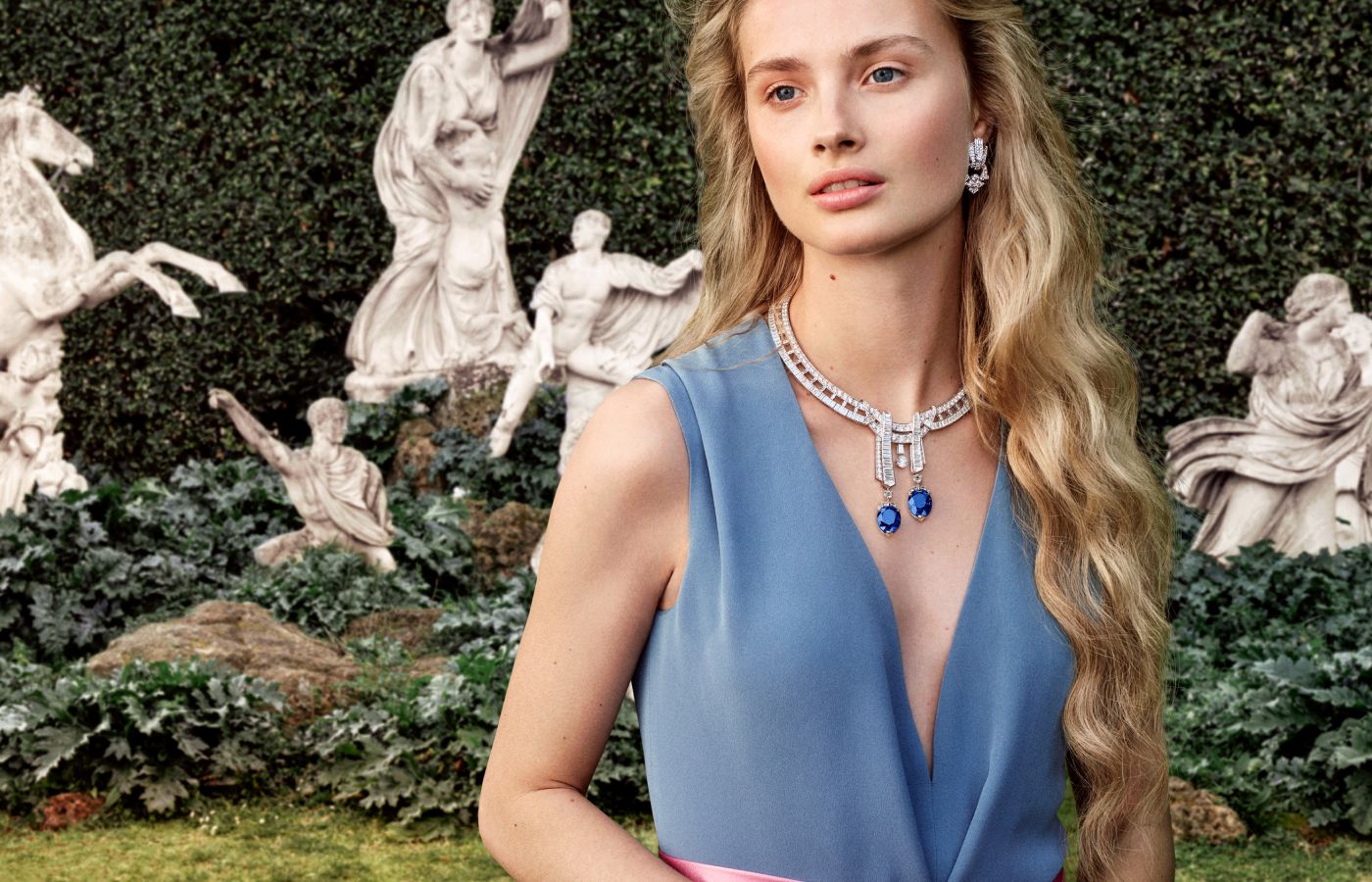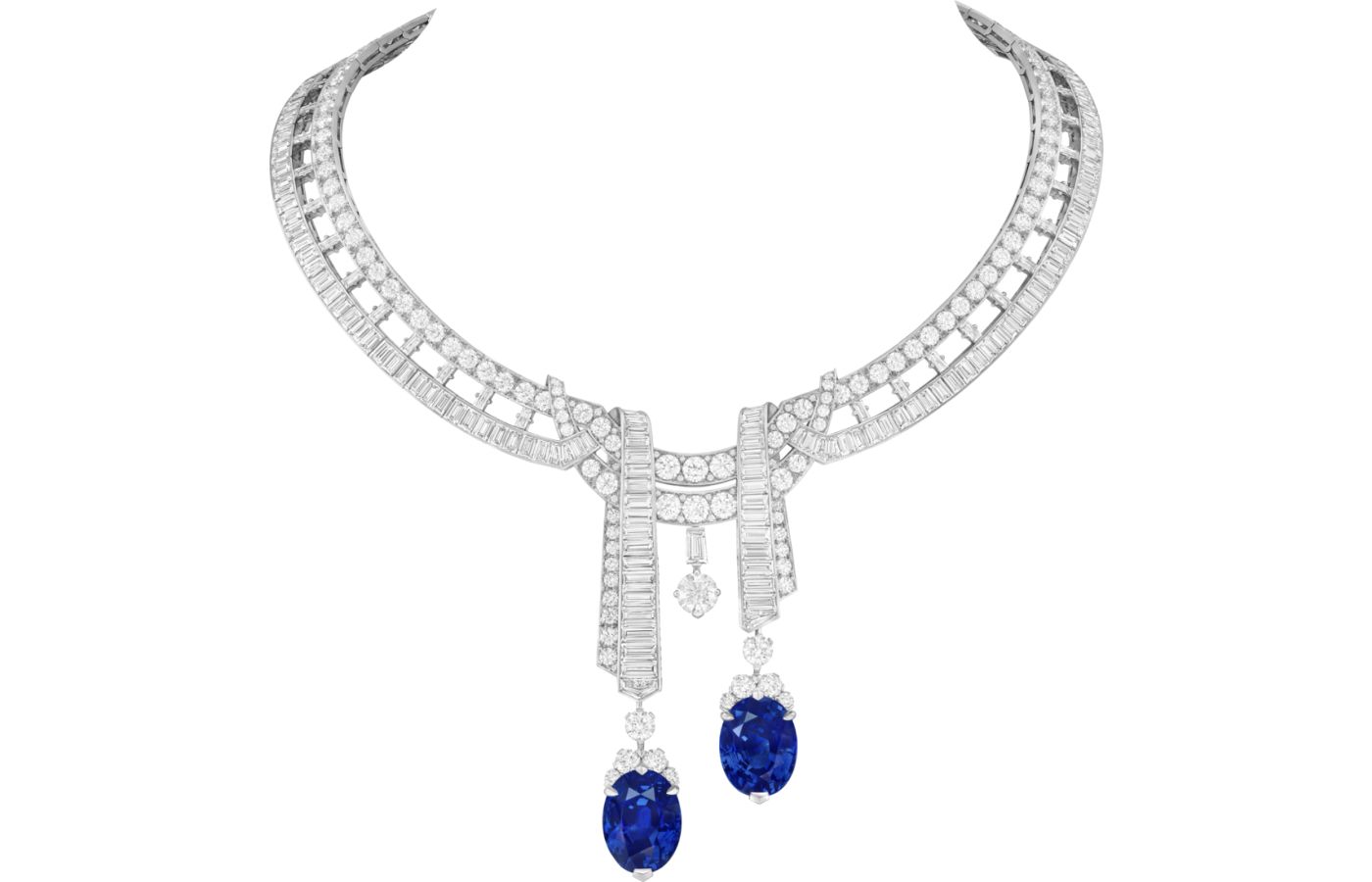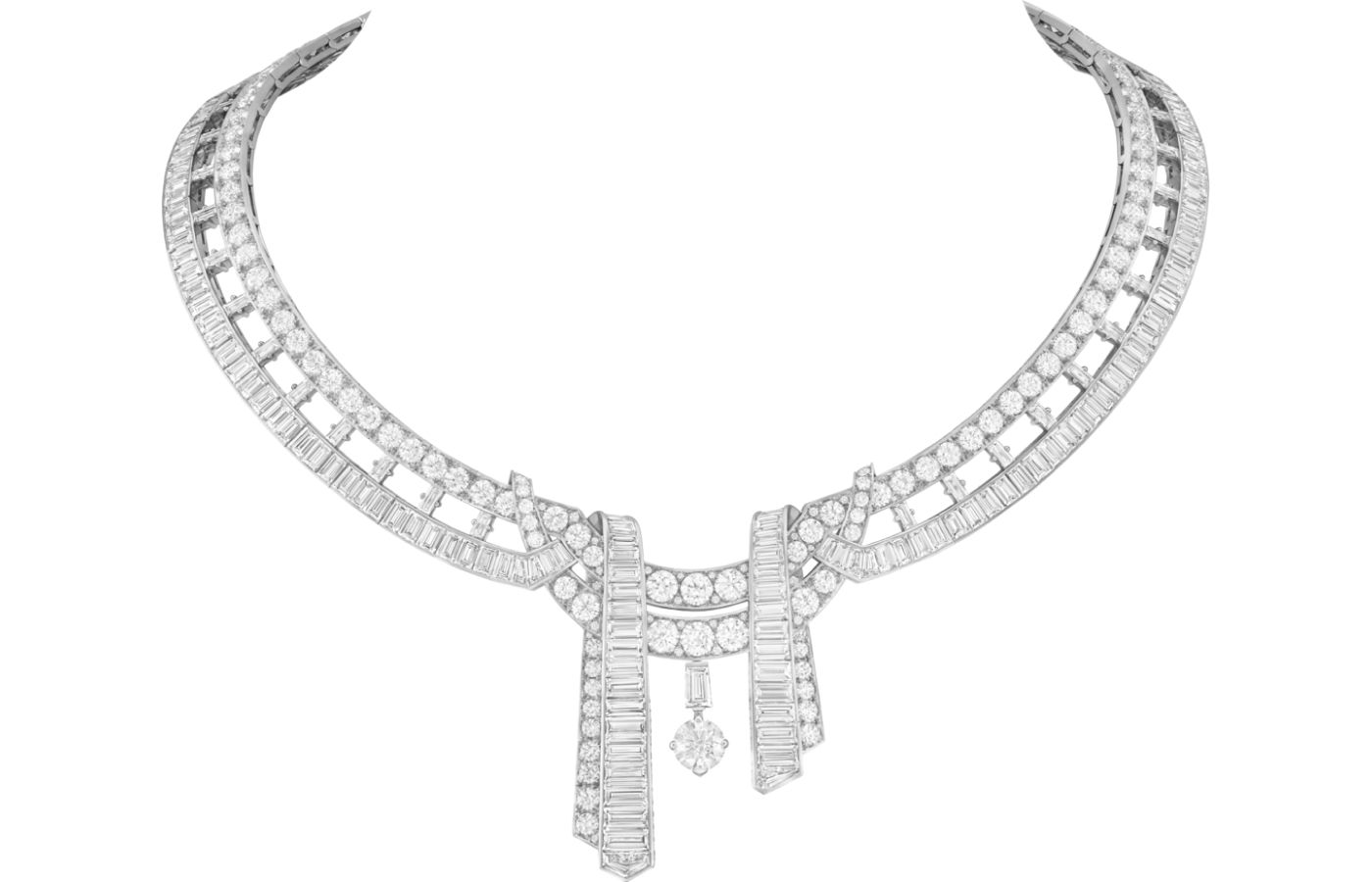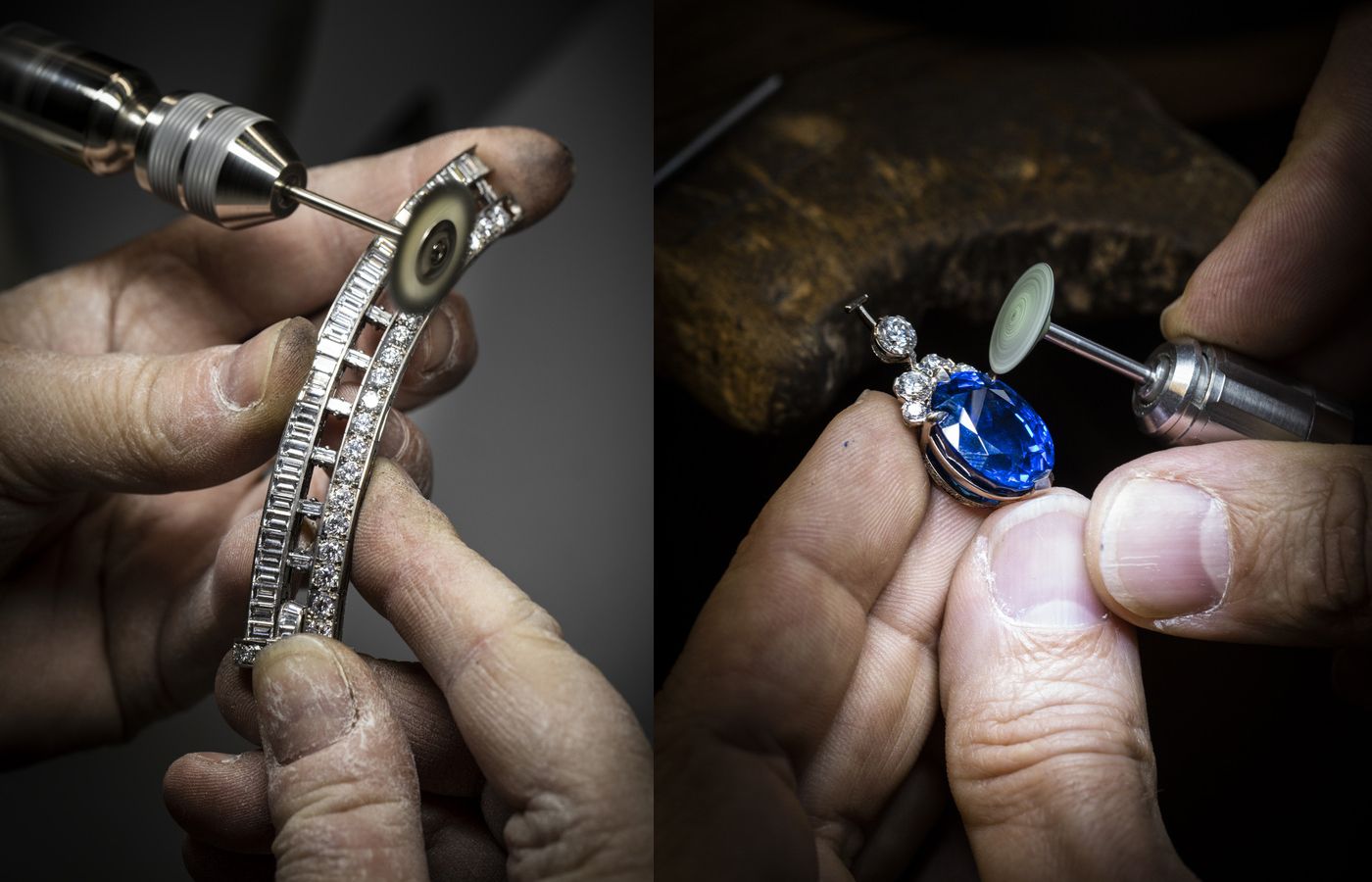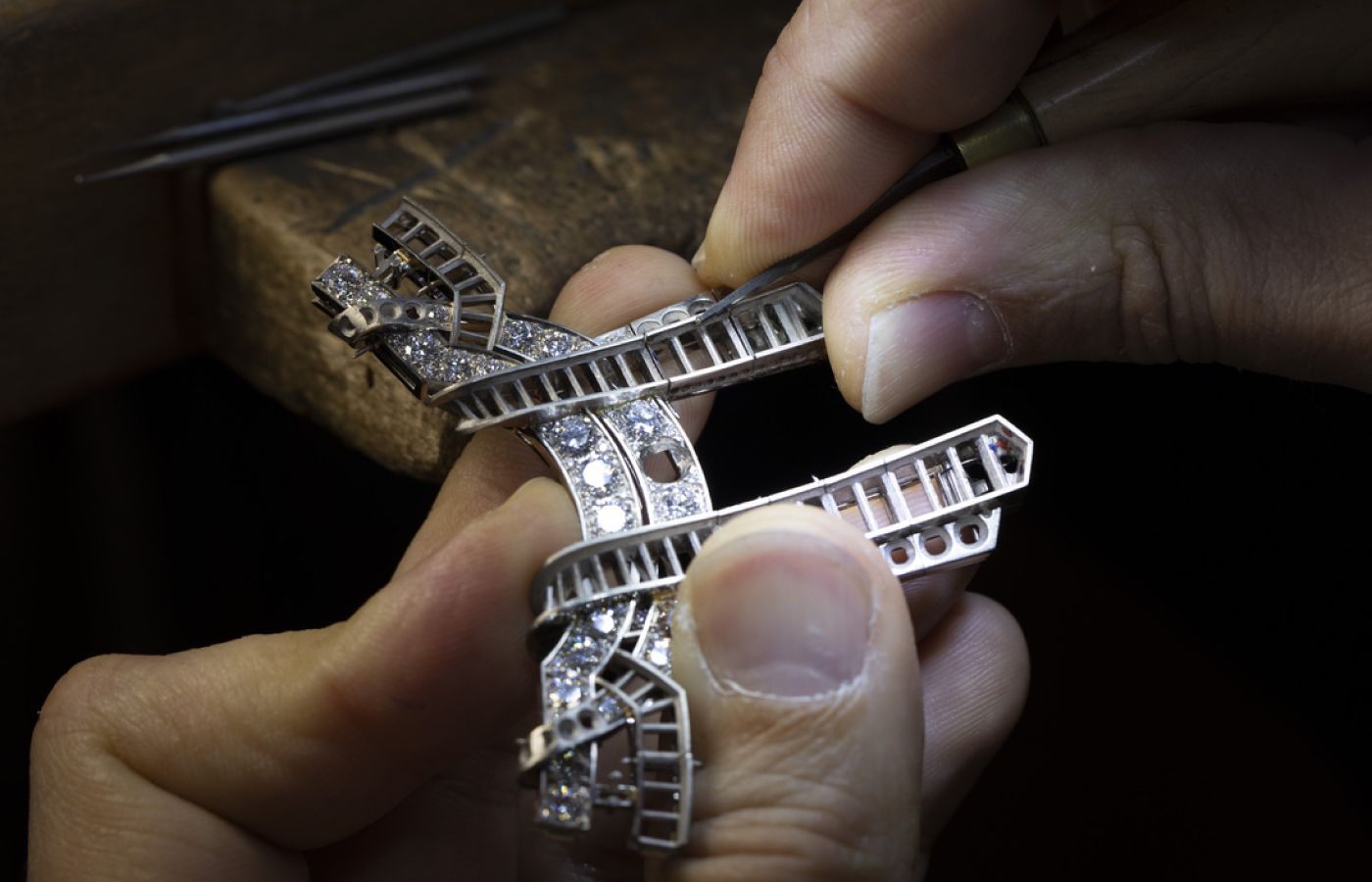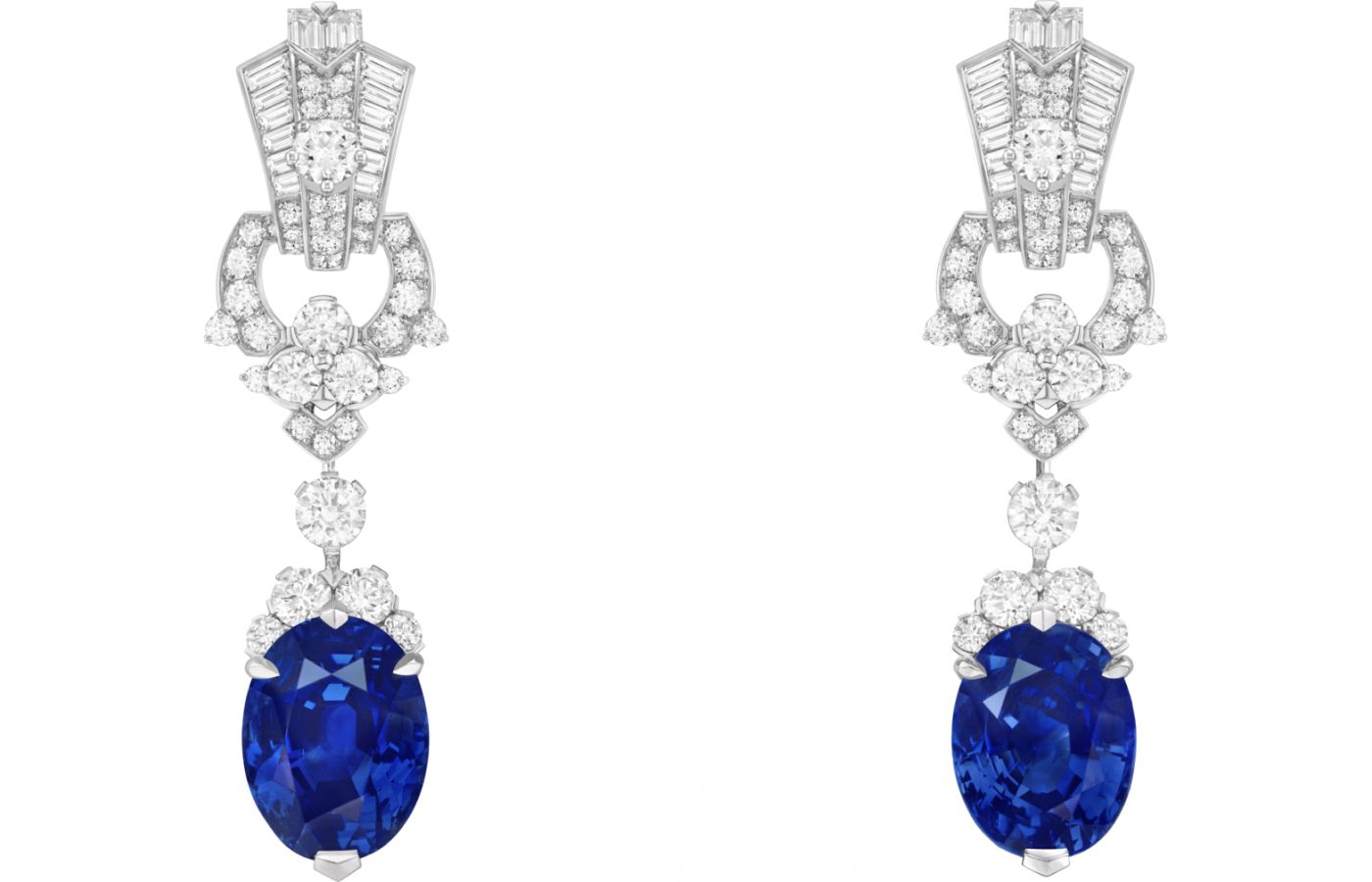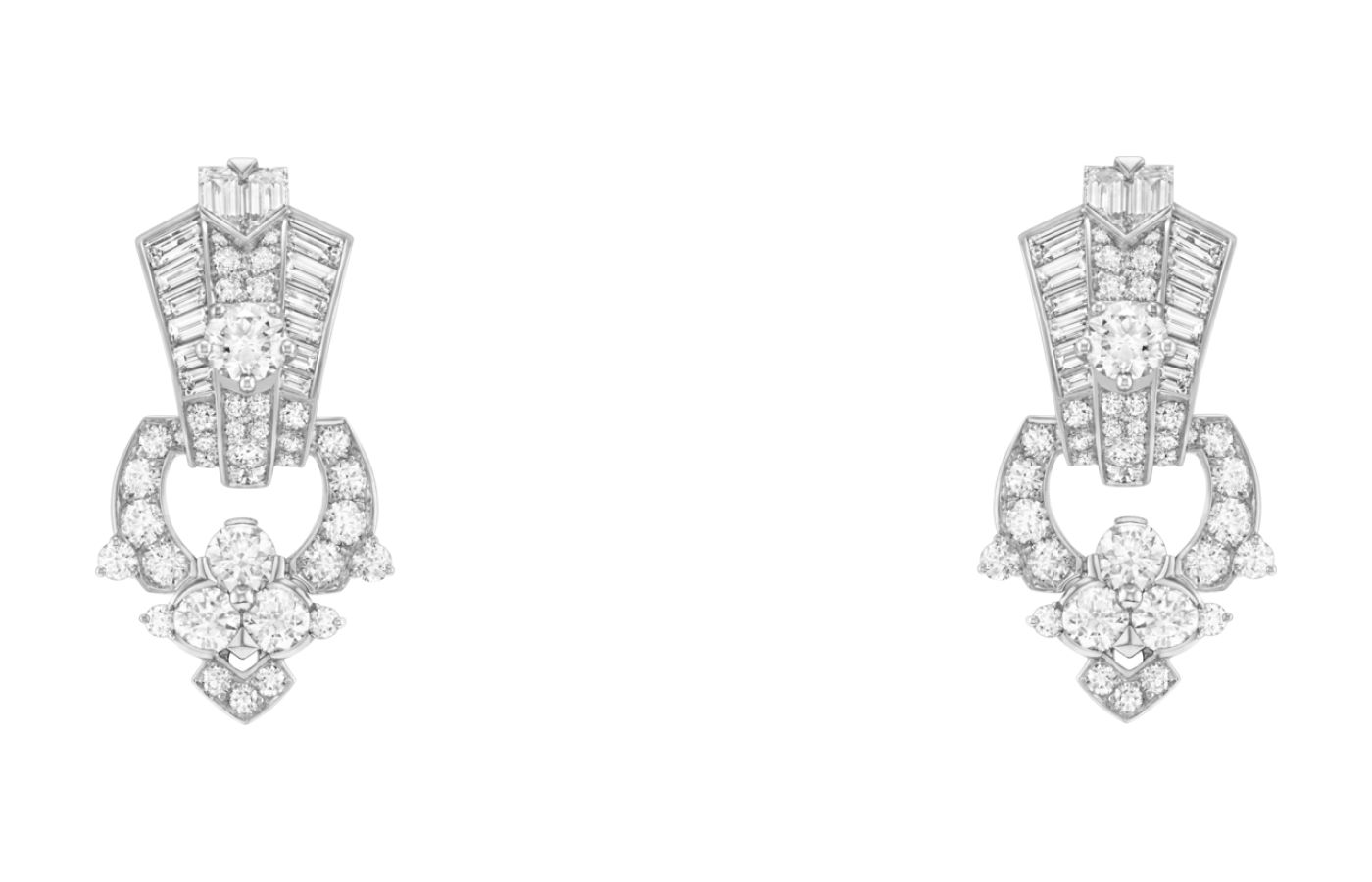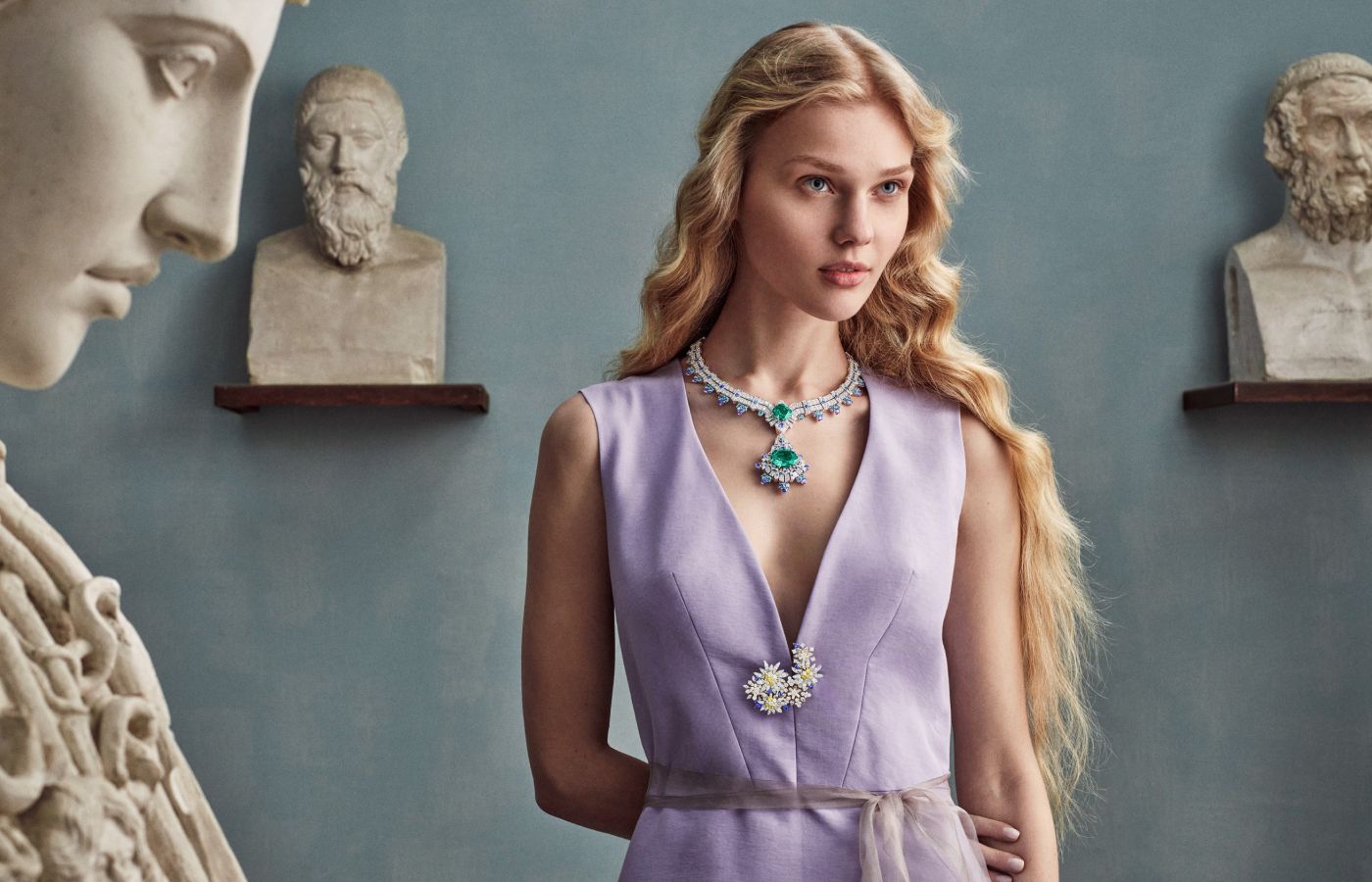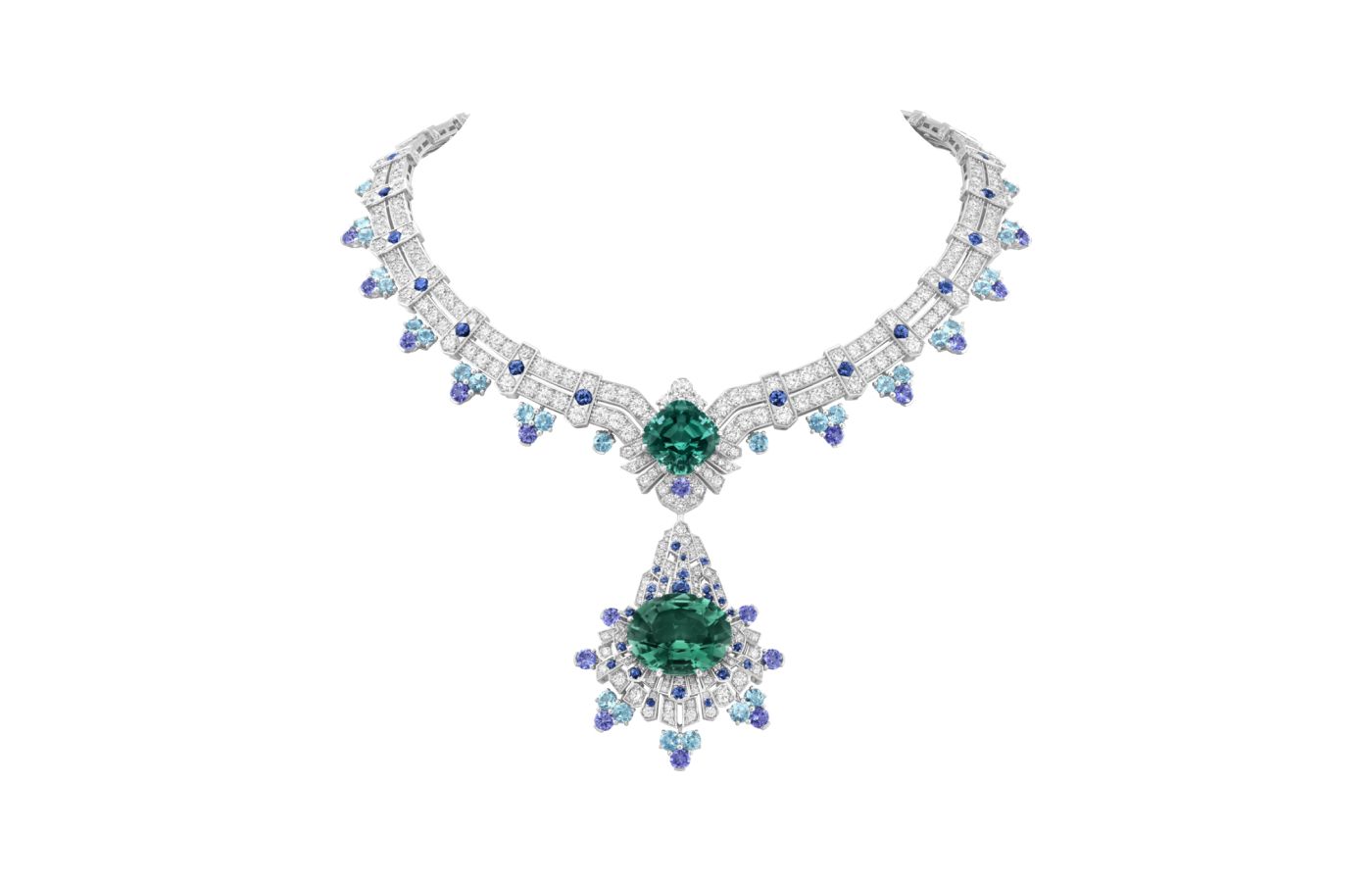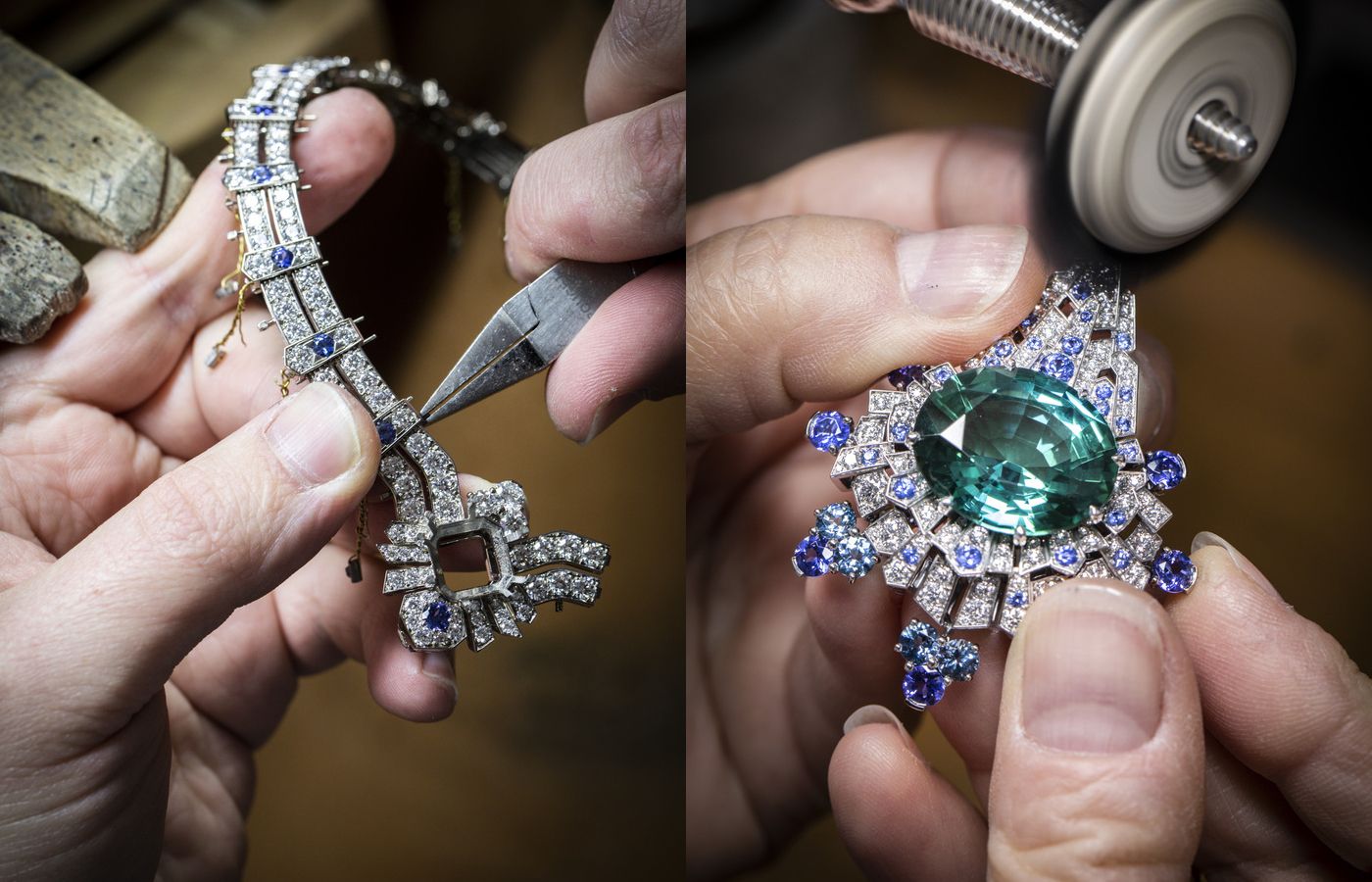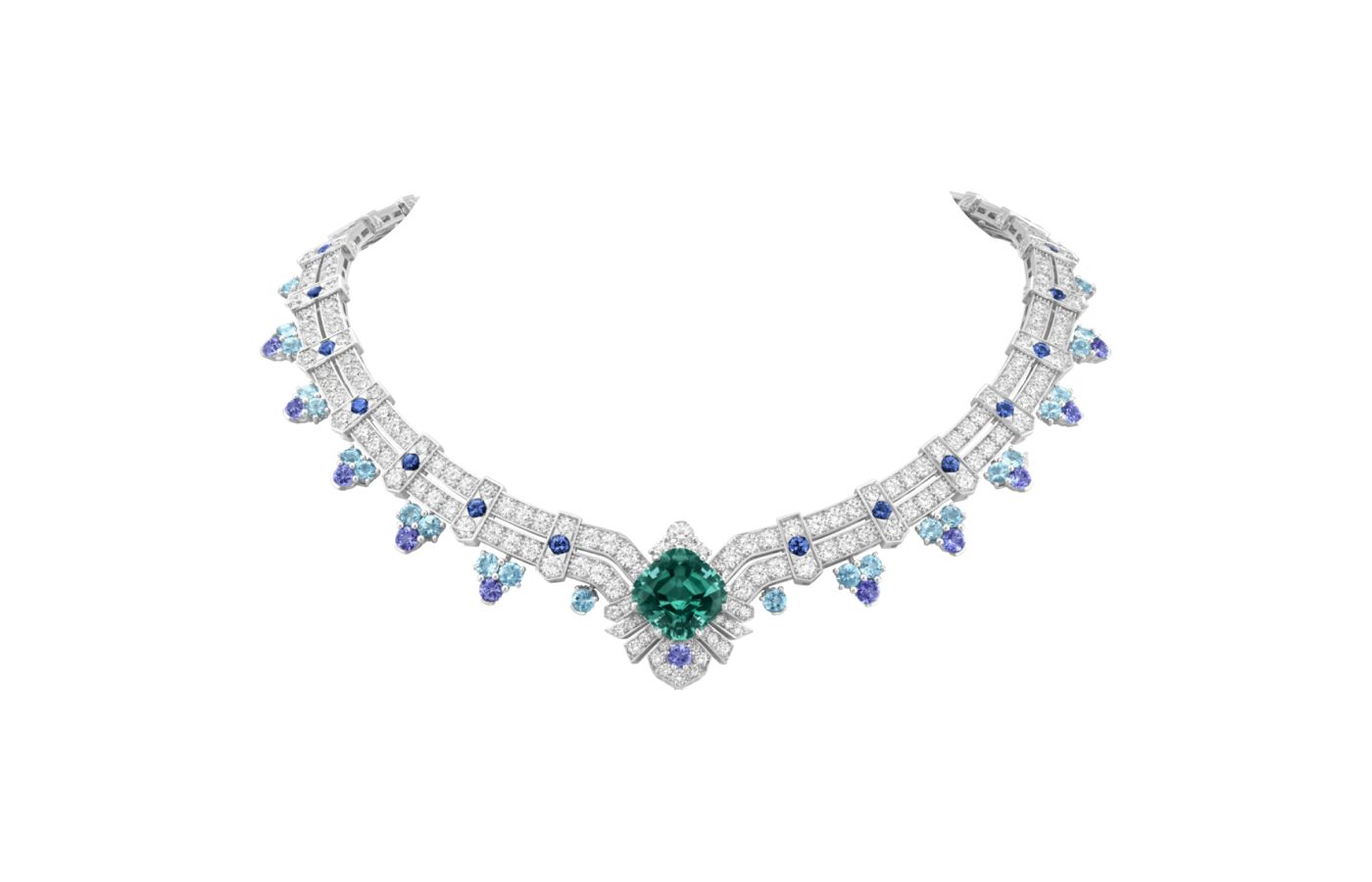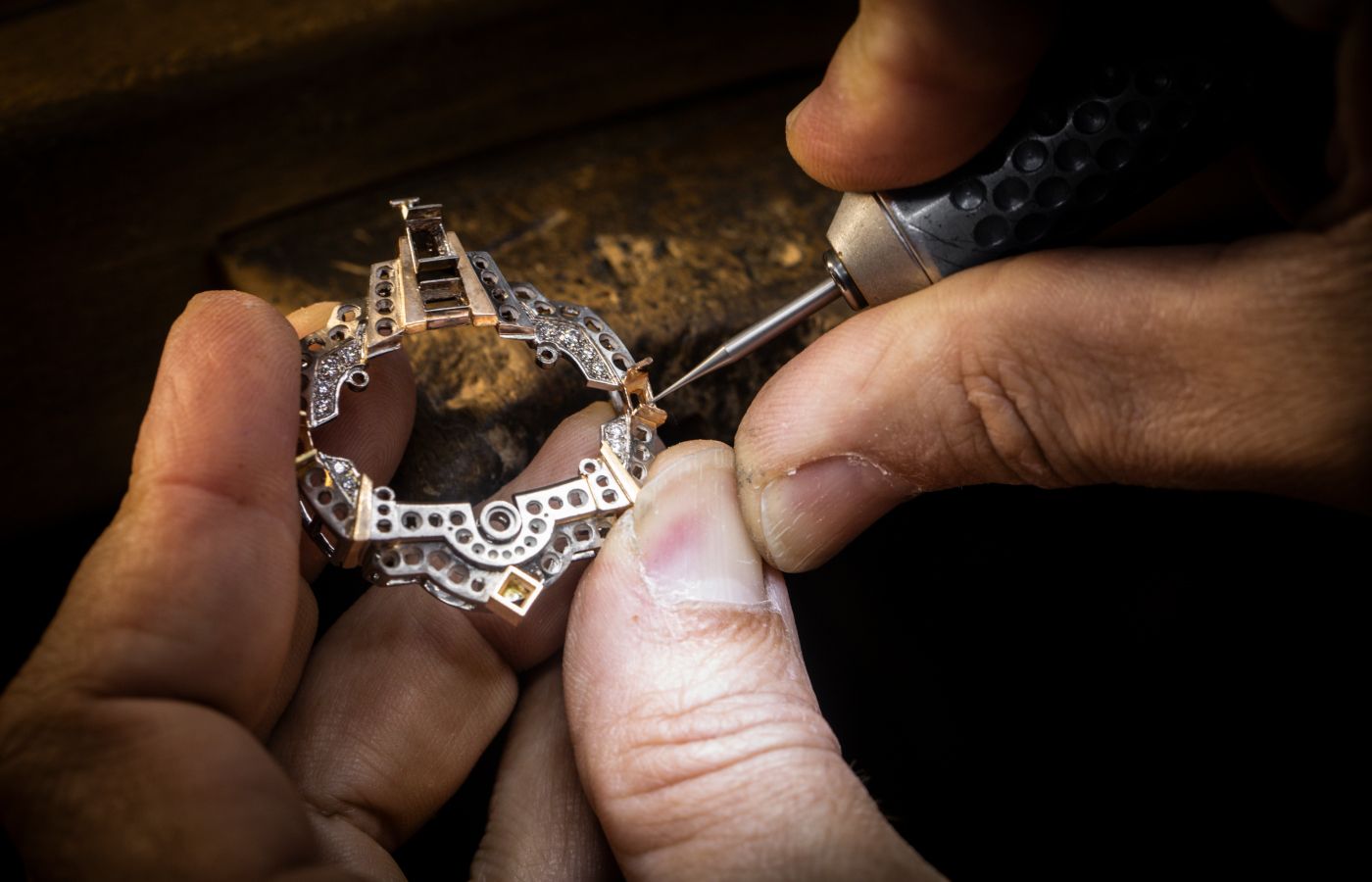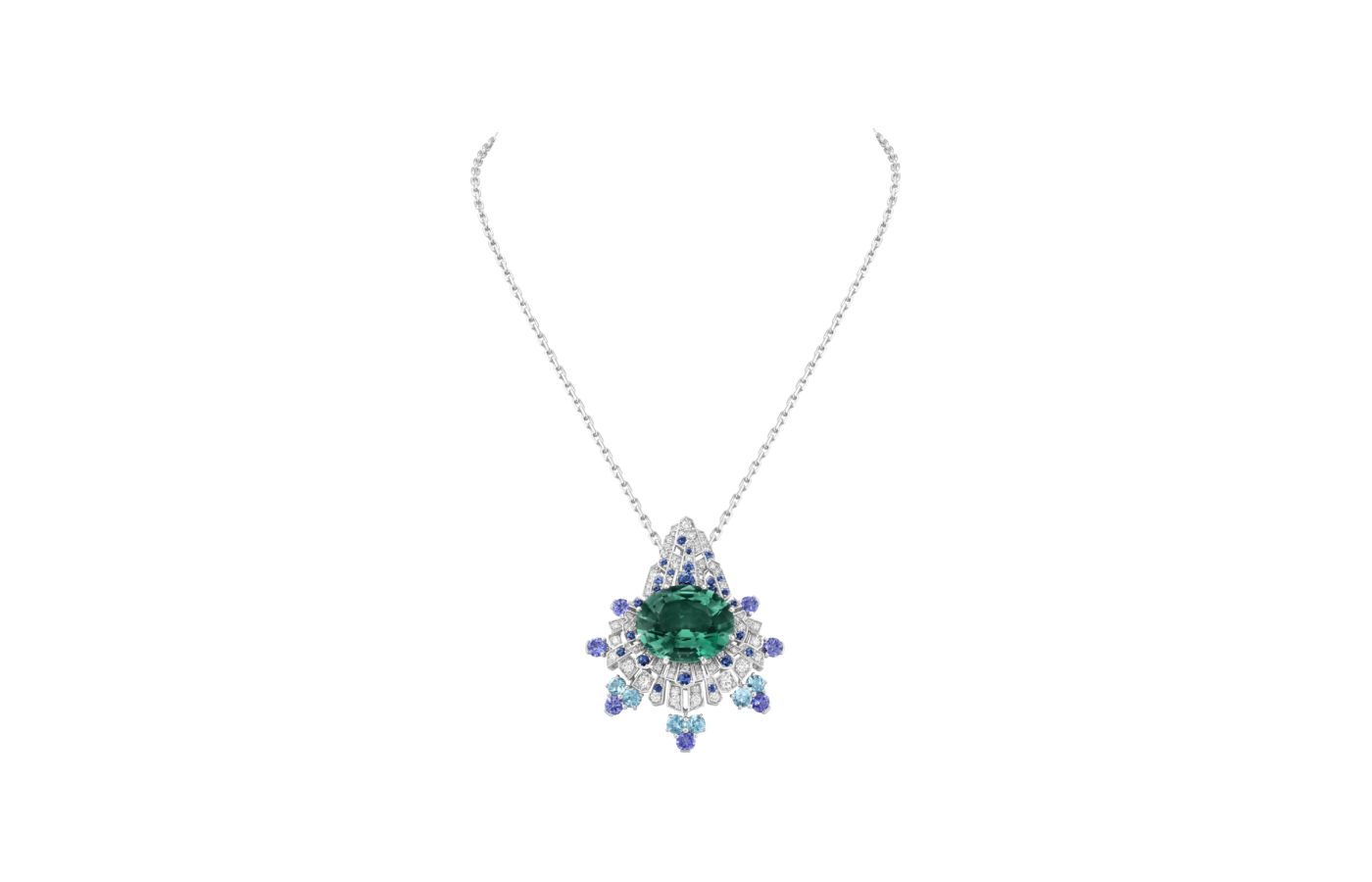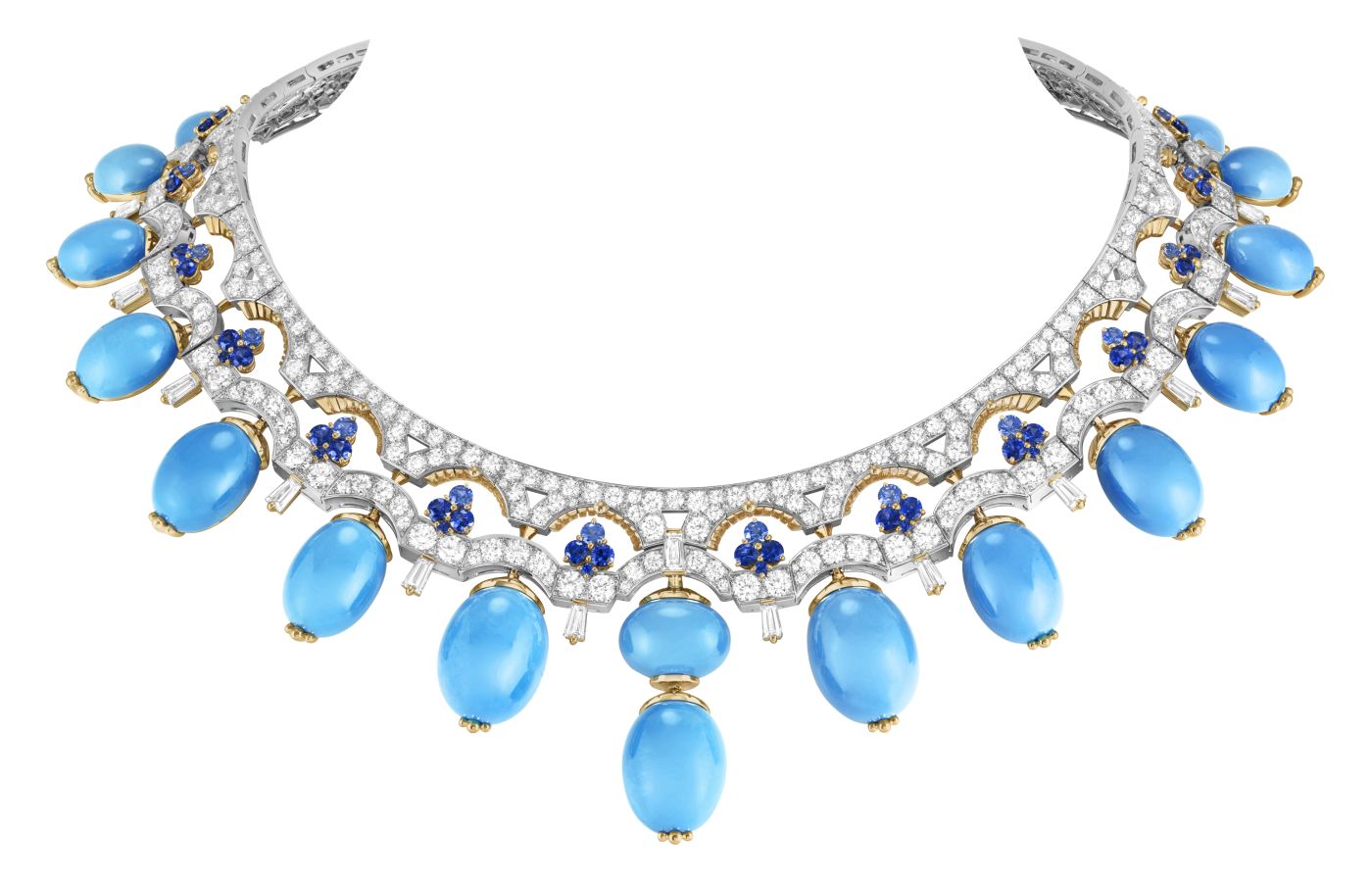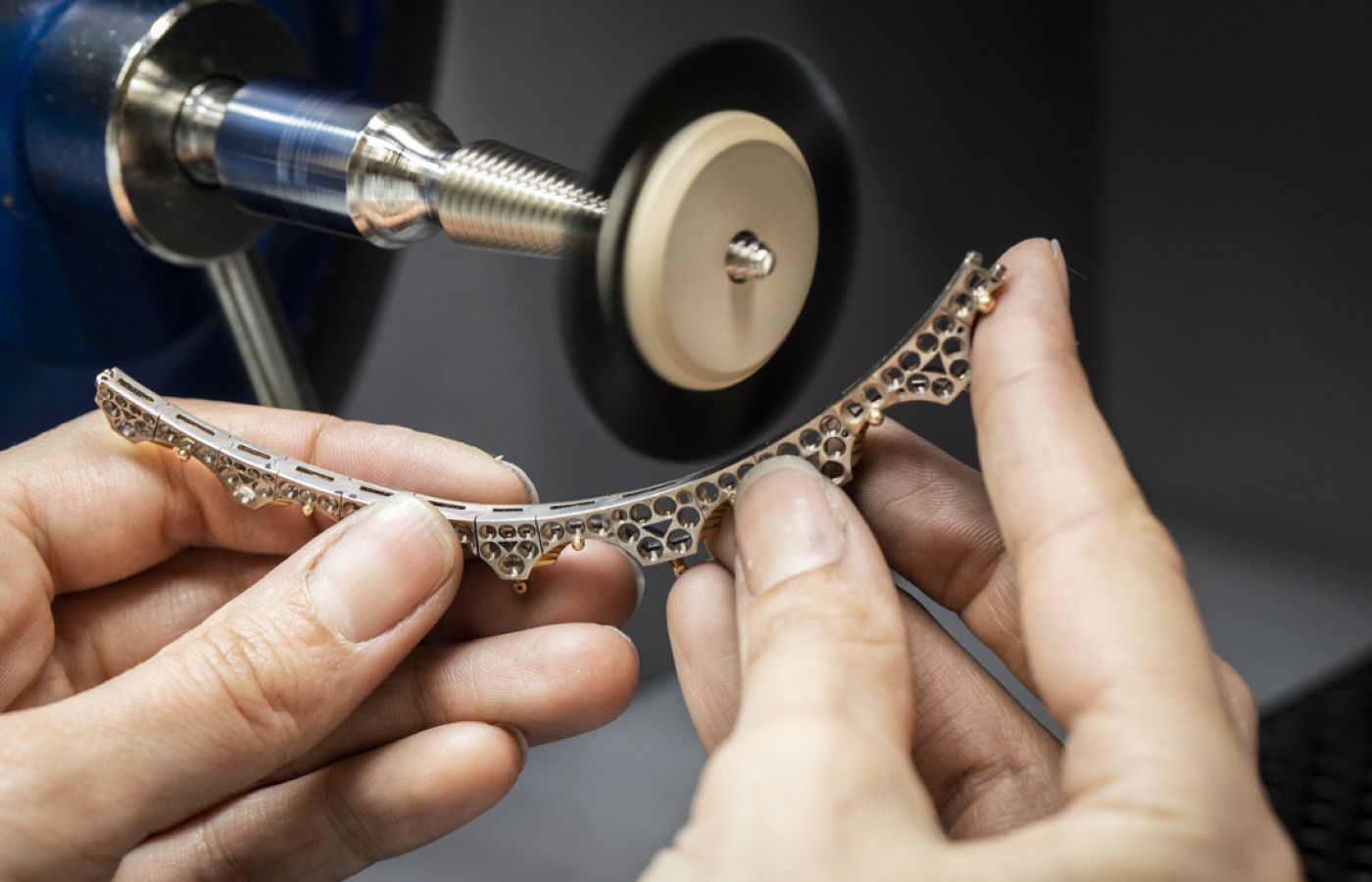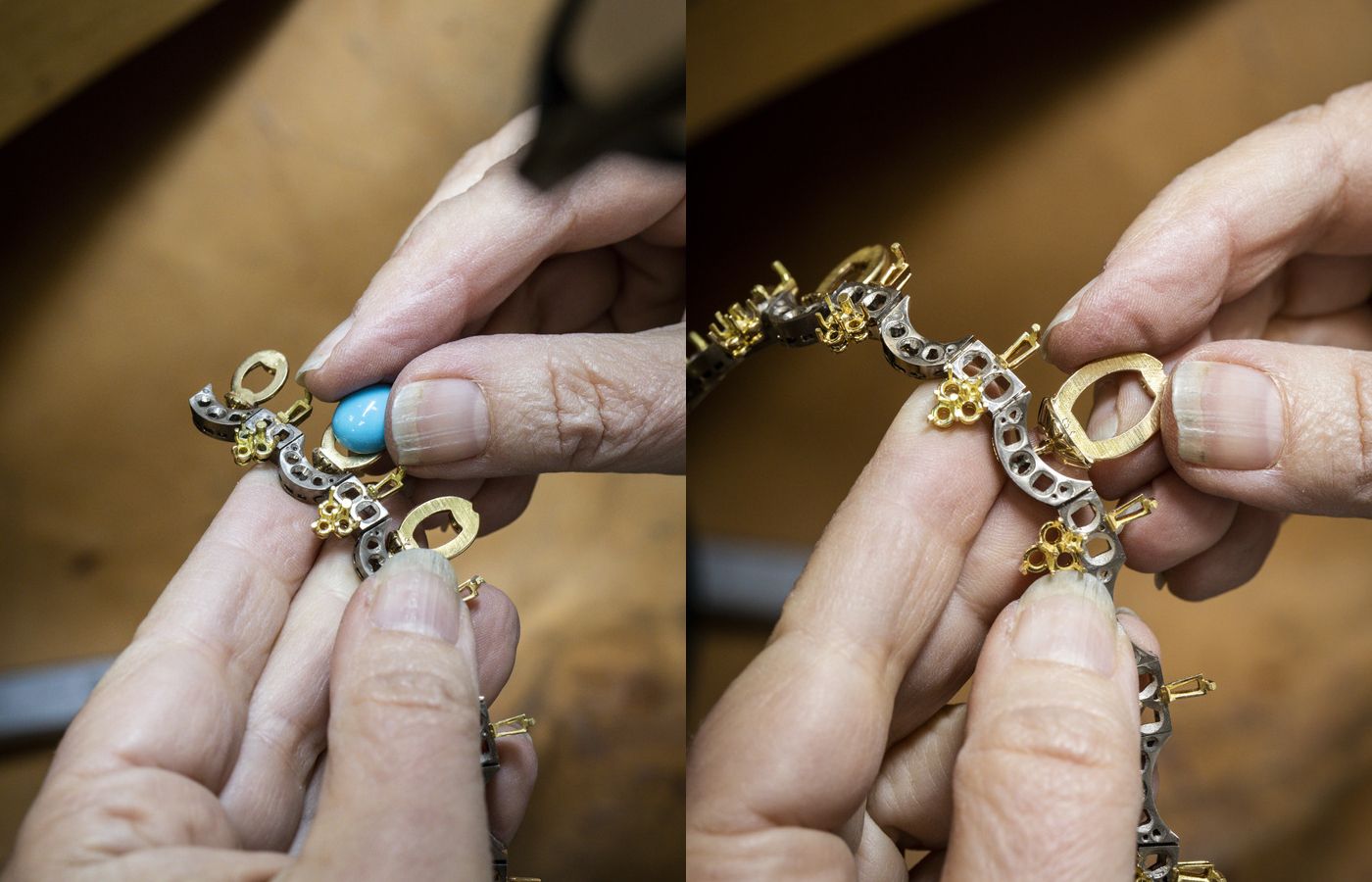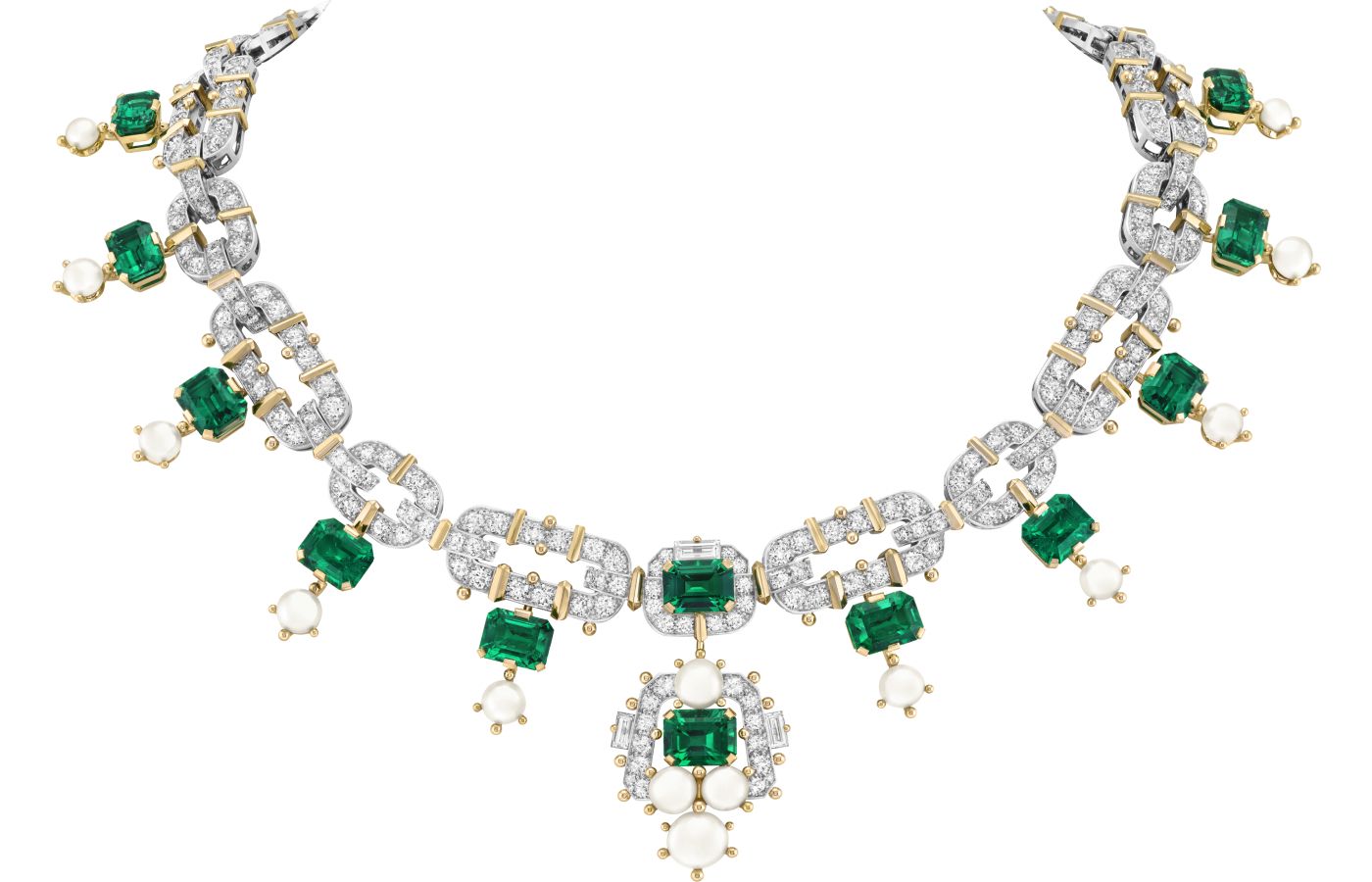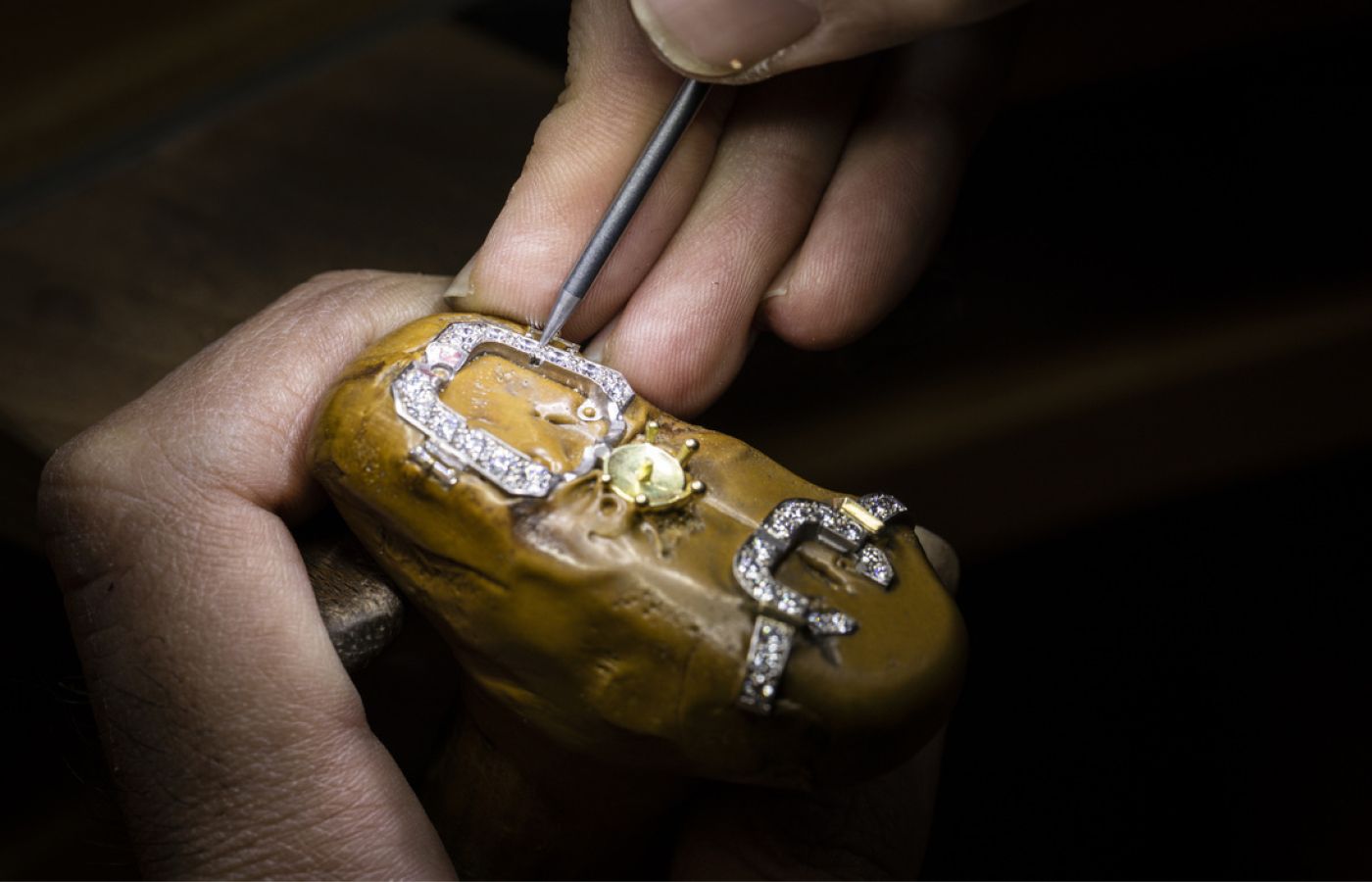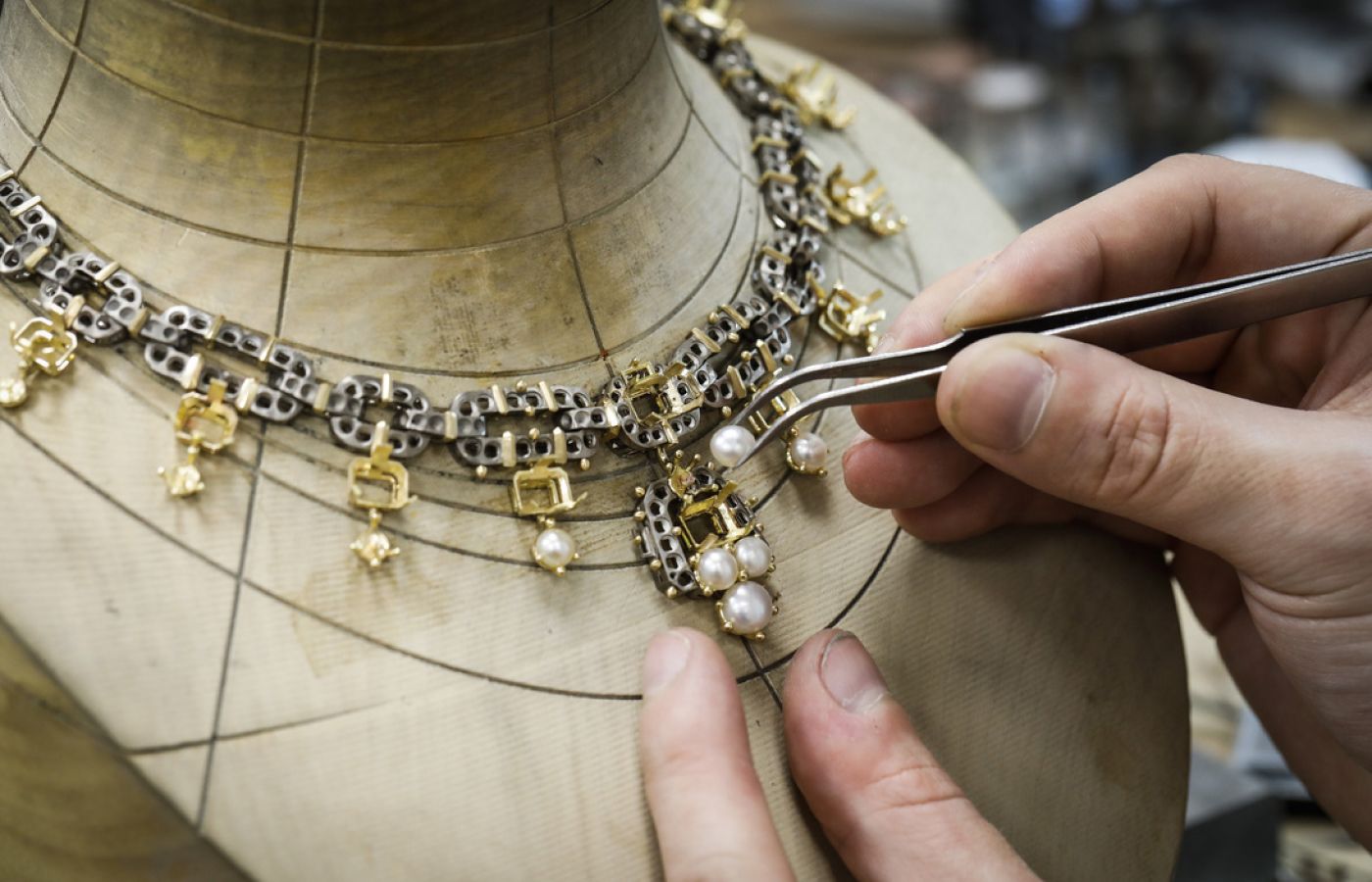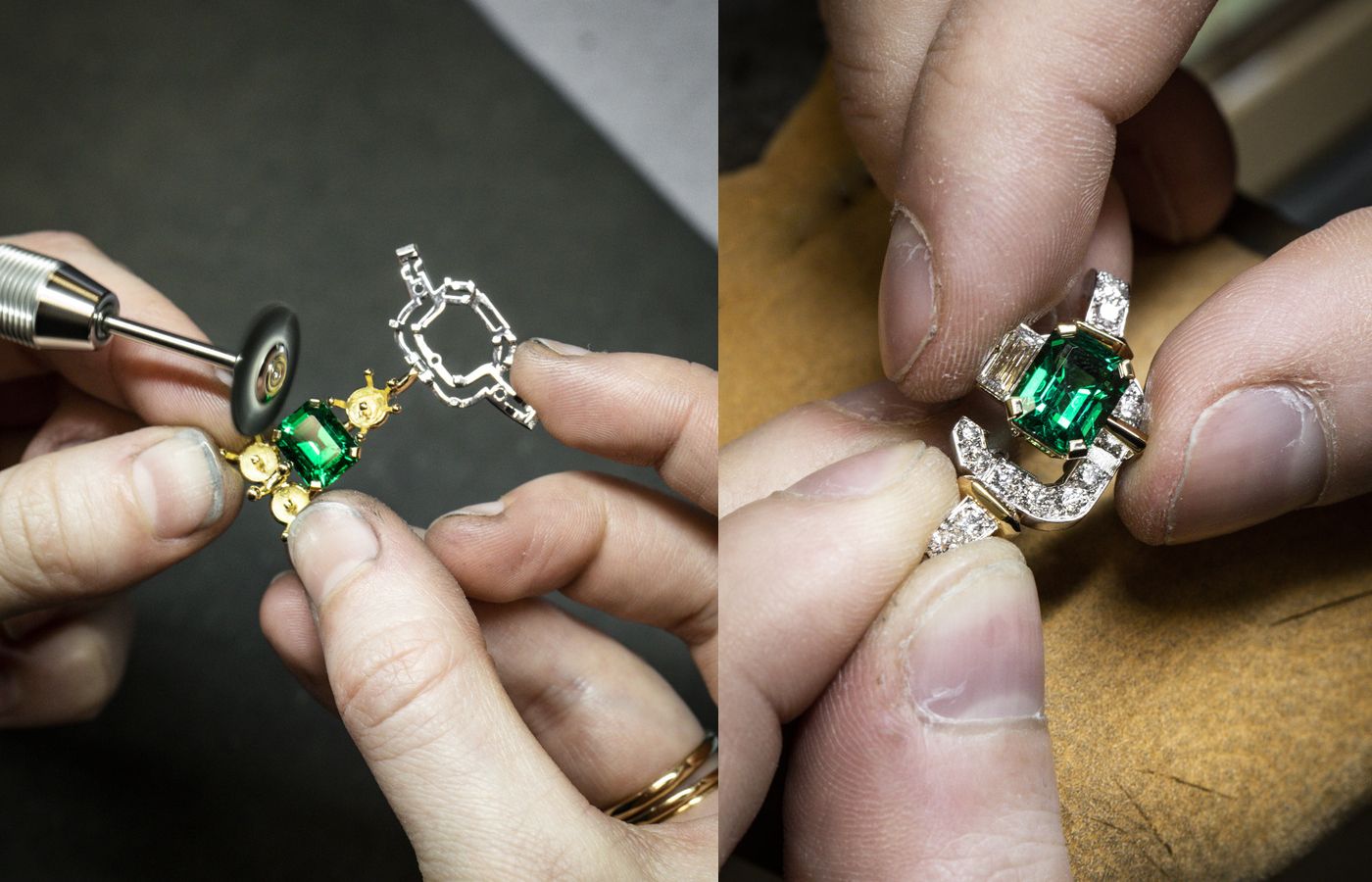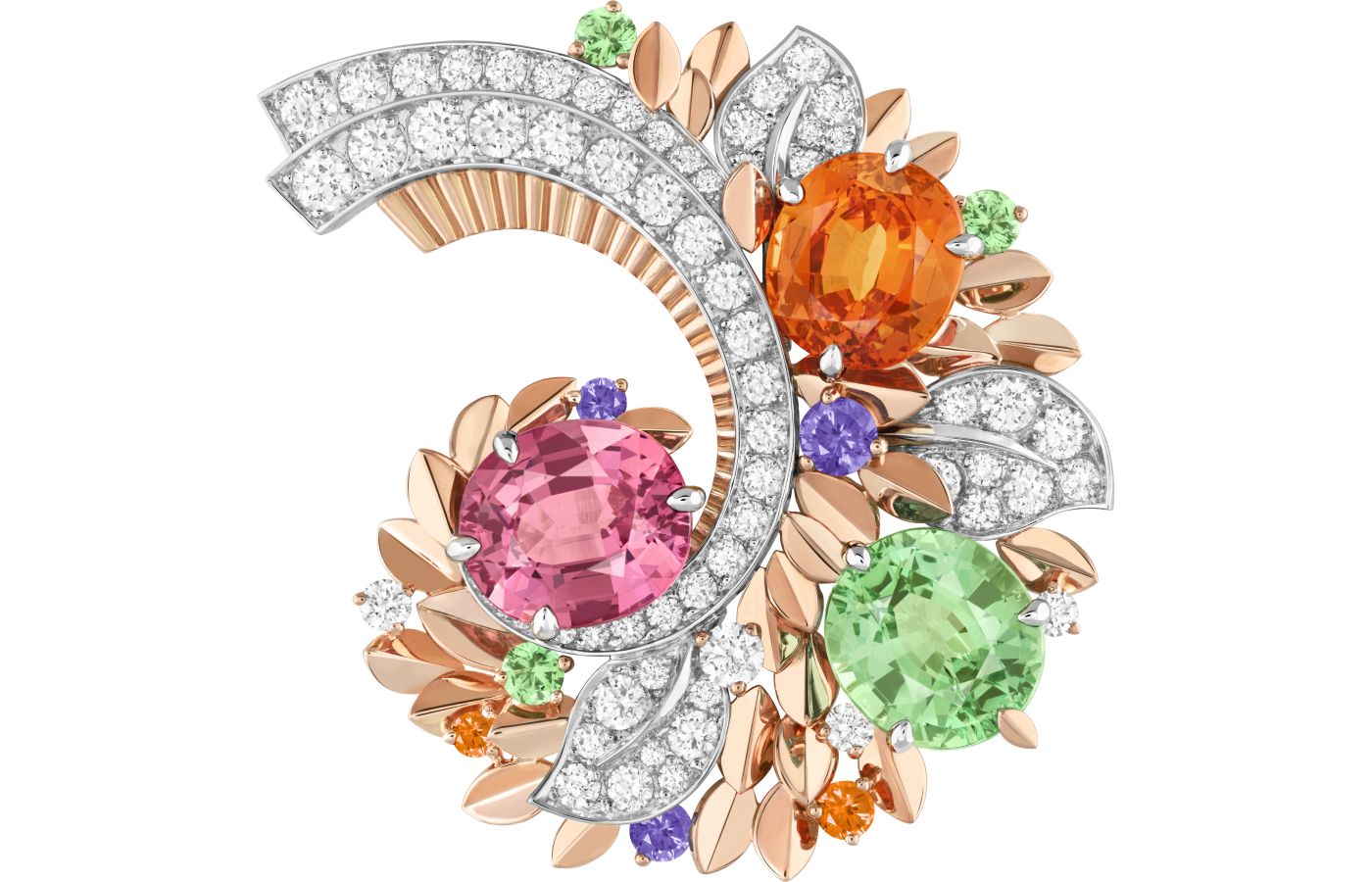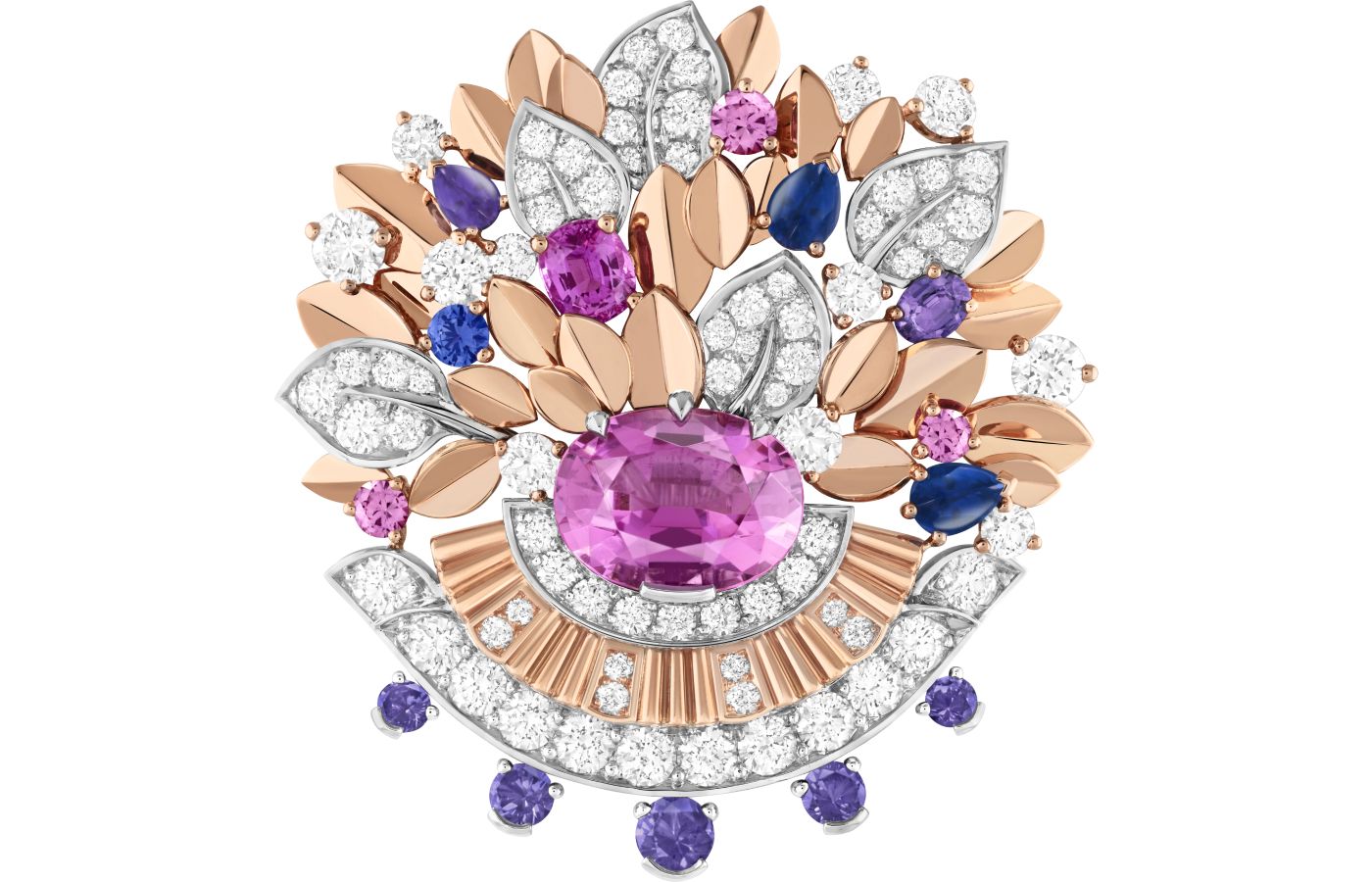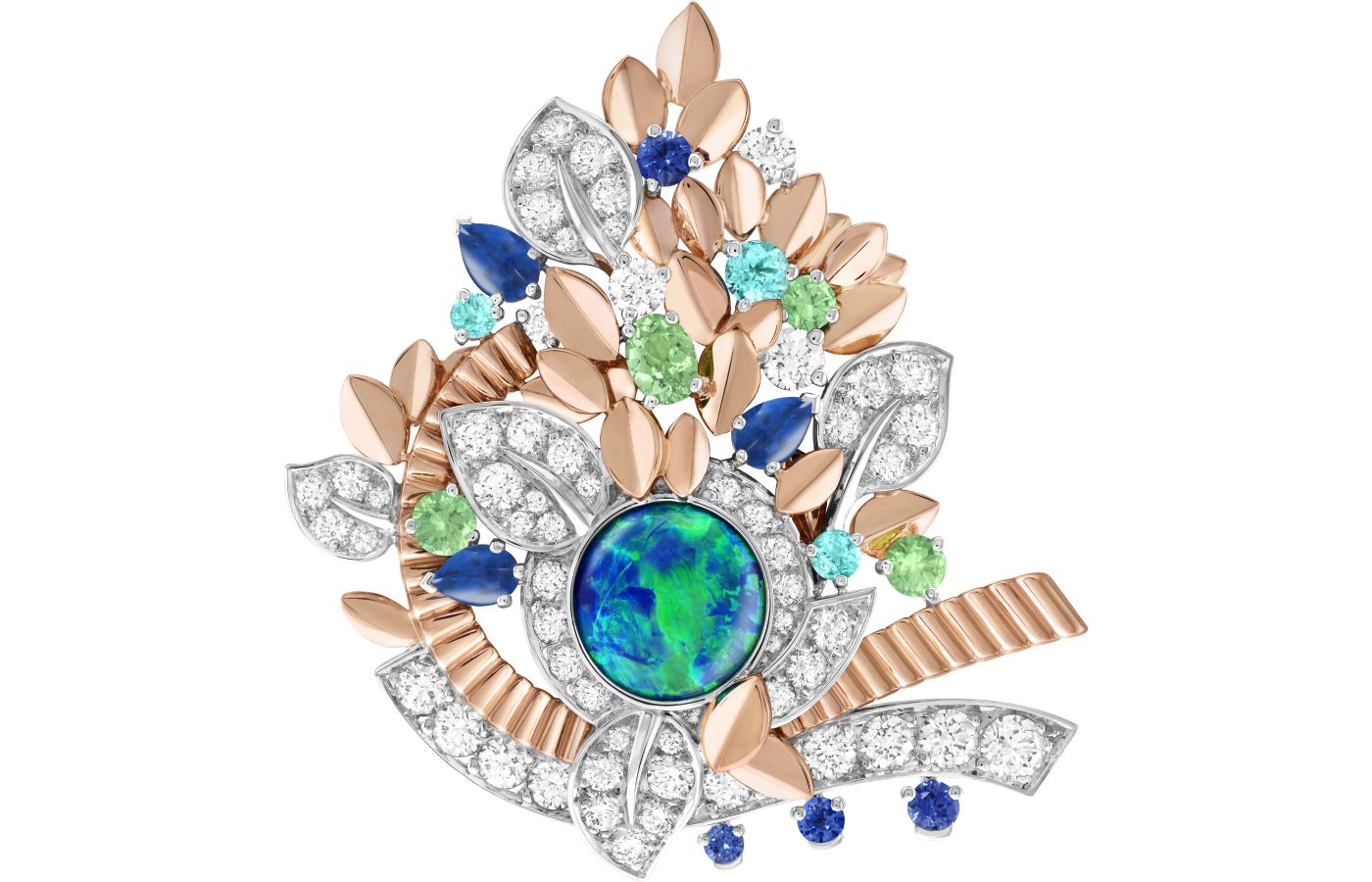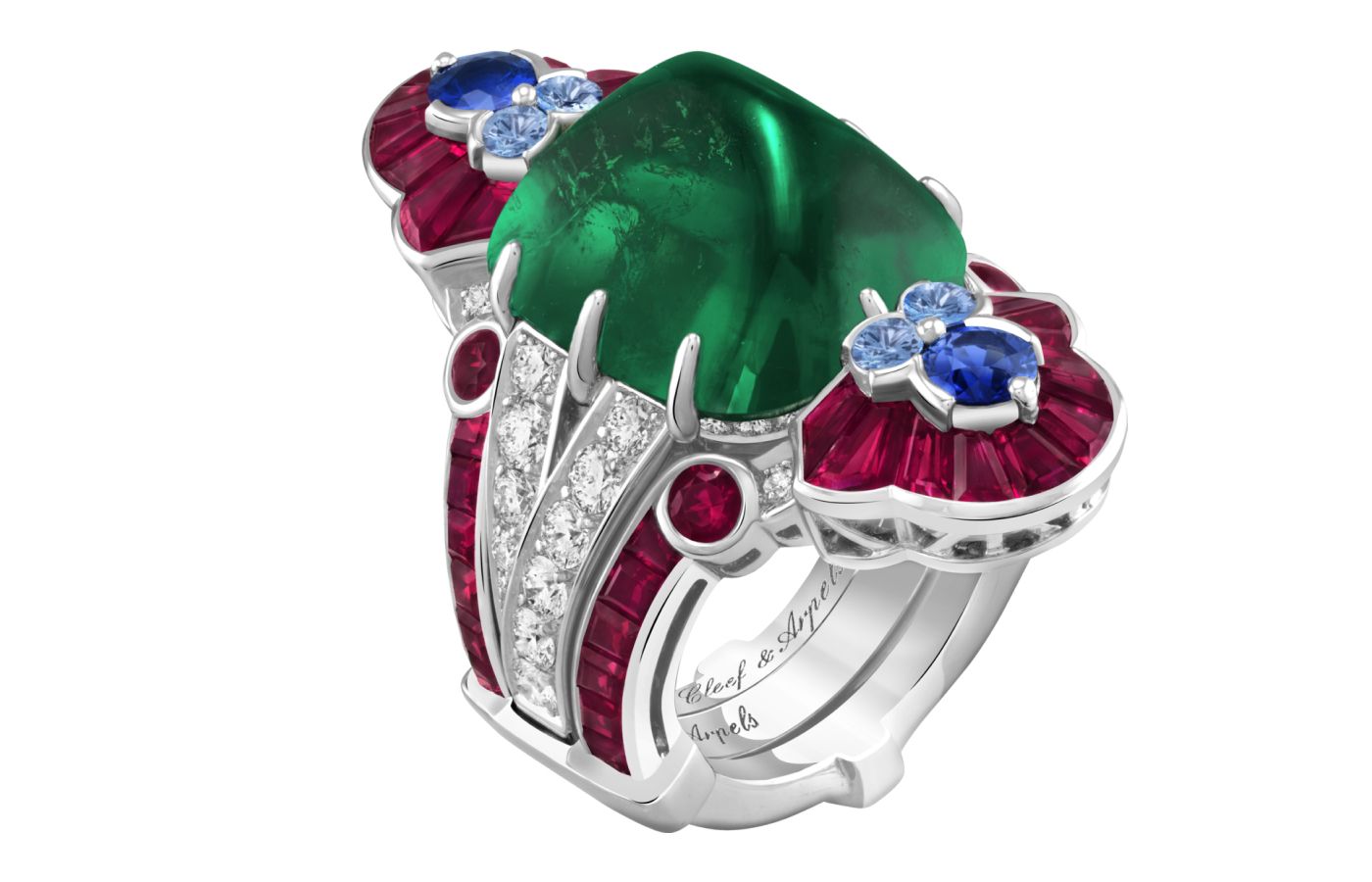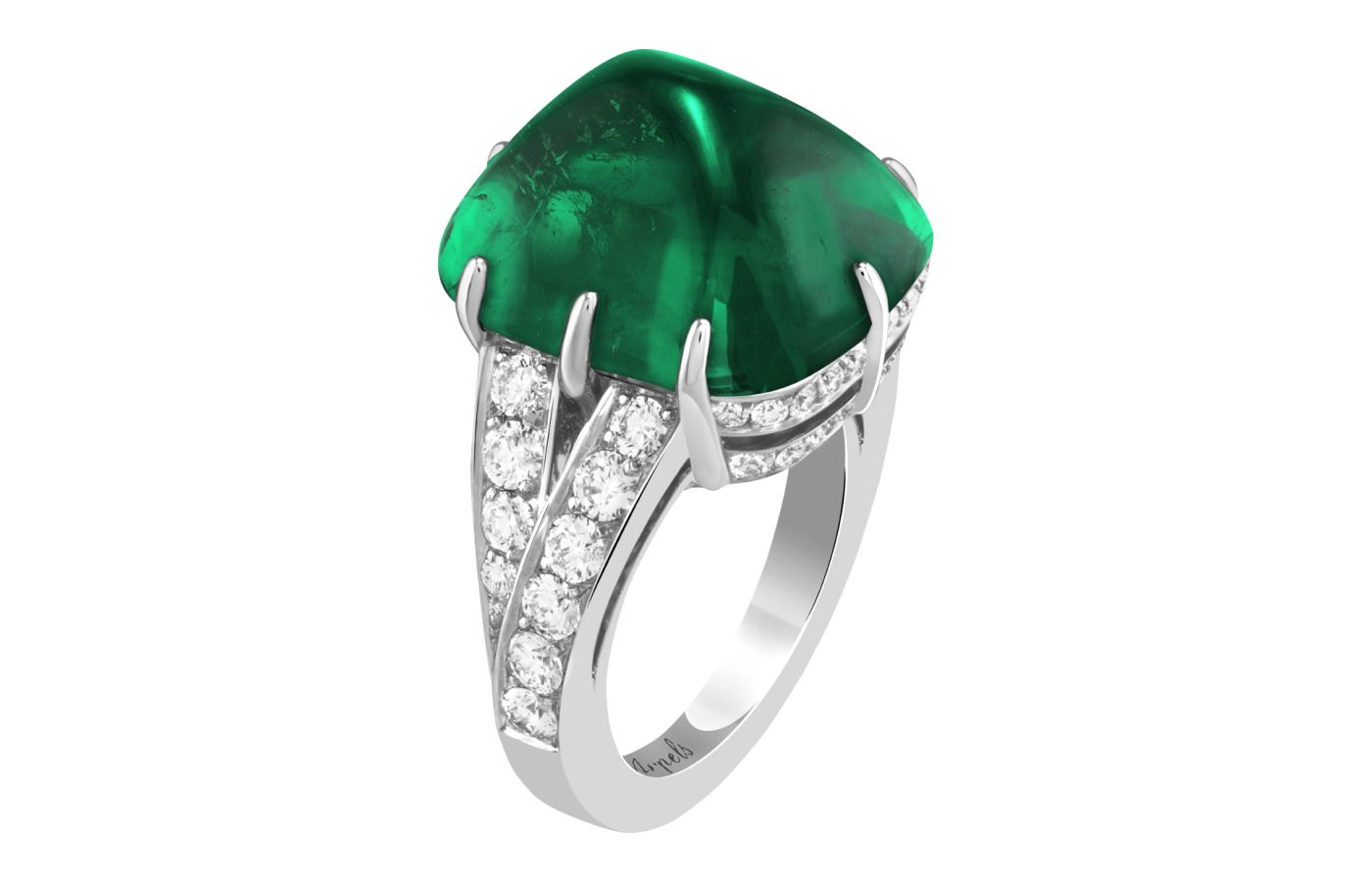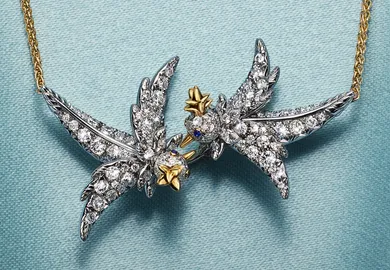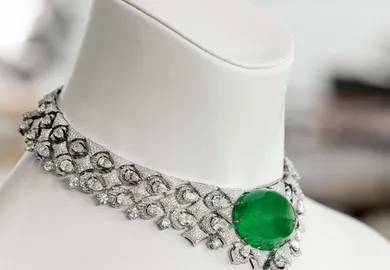
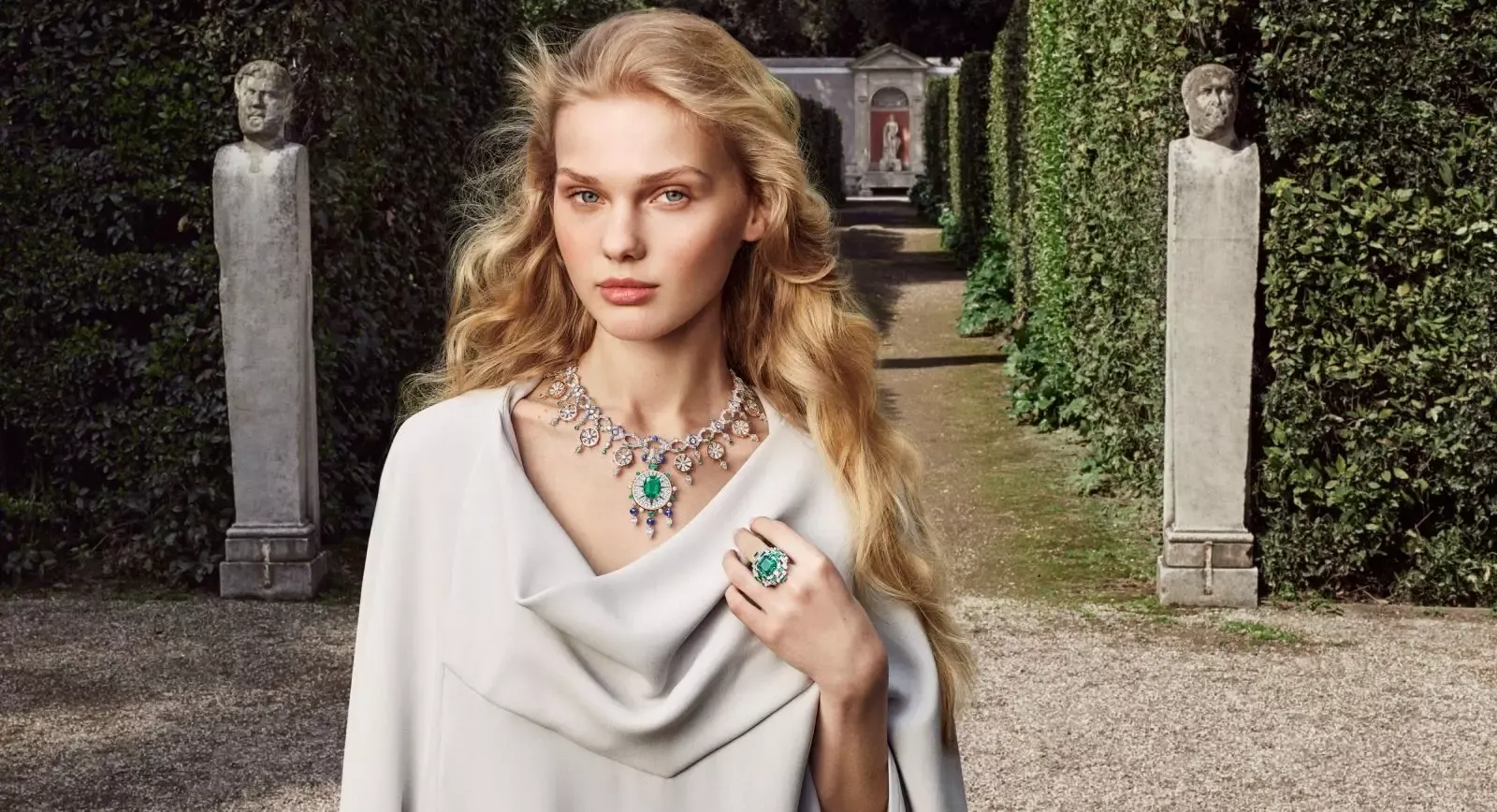
Bon Voyage: Le Grand Tour High Jewellery Collection by Van Cleef & Arpels
Van Cleef & Arpels’ Le Grand Tour high jewellery collection is an ode to the popular 18th-century voyage that the enlightened aristocracy and elite would embark on to sightsee Europe. Each of the 70 pieces included in this collection is representative of the works of art, flora, architectural details, and historical monuments of the most popular cities visited during such an epic tour. Through textured gold and carefully chosen coloured gemstones, the Maison has crafted pieces that enable us to rediscover the different cities and their iconic artistic treasures, allowing us to travel ourselves.
Van Cleef & Arpels presented its latest high jewellery collection on Place Vendôme in a unique fashion: in a classroom setting at their famed school, L’École des Arts Joailliers. It is a place of learning where visitors are treated to an exceptional discovery of jewellery history, savoir-faire, and the world of gemstones. This environment is perfect for presenting this collection, as it underscores how the historic 18th-century expeditions that young aristocrats would undertake would be for educational purposes: to study art and literature across Europe. The Maison has reinterpreted this journey and its emblematic sights through eight high jewellery chapters named after the most important stops along a typical traveller’s route.
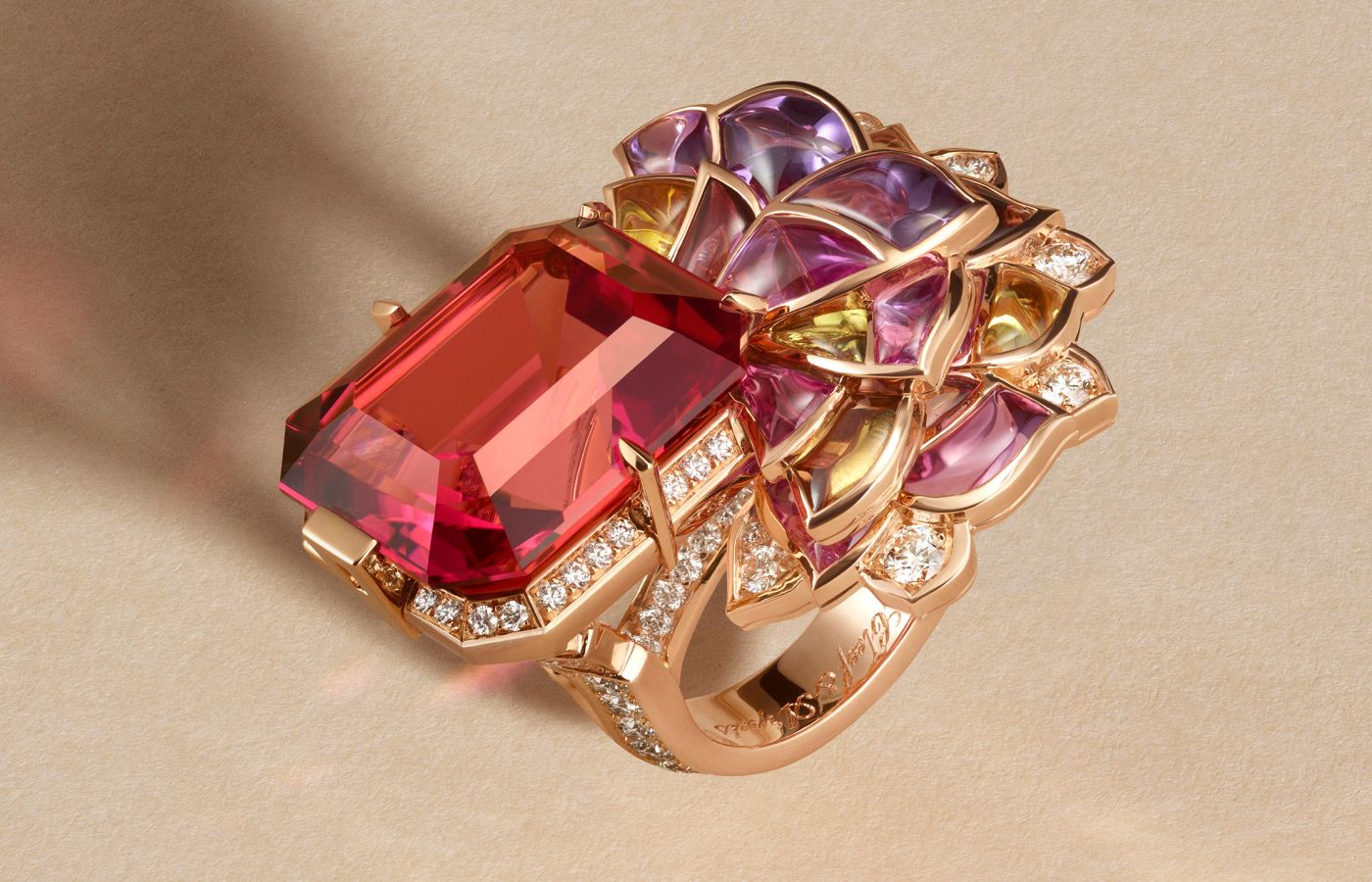
Van Cleef & Arpels Jardin de La Rose ring in rose gold, a 23.67-ct emerald-cut rubellite, coloured sapphires and diamonds from Le Grand Tour High Jewellery collection
Chapter I – London
London is the first stop on this voyage across the continent, paying homage to the British institution of Wedgewood porcelain. Inspired by the lace patterns and muted colours it is known for, this first chapter is full of plays between white and blue gemstones to recreate that famed industry’s style, patterns and colours. The Josiah necklace is created from intertwining strands of round brilliant and baguette-cut diamonds set in white gold, culminating in two oval-cut Sri Lankan sapphires of 25.10 and 21.78 carats that hang delicately at the centre of the necklace. In keeping with the Maison’s tradition of transformable high jewellery, each of these sapphires can be detached from the necklace and reattached to a matching set of earrings.
Another important British artistic landmark noted in this first chapter is Chatsworth House. Nicknamed the English Versailles, this residence was home to one of artist Antonio Canova’s famous statues of Hebe, the Greek goddess of youth. Van Cleef & Arpels pays tribute to this important work through the Dea Eterna clip. The piece depicts the goddess in diamonds and yellow gold, perched on a rough lapis lazuli and surrounded by a shimmering waterfall of marquise-cut diamonds and textured shards of yellow gold. A black pearl drop finishes the design, which is another nod to Hebe as it is a stone that symbolises eternal youth.
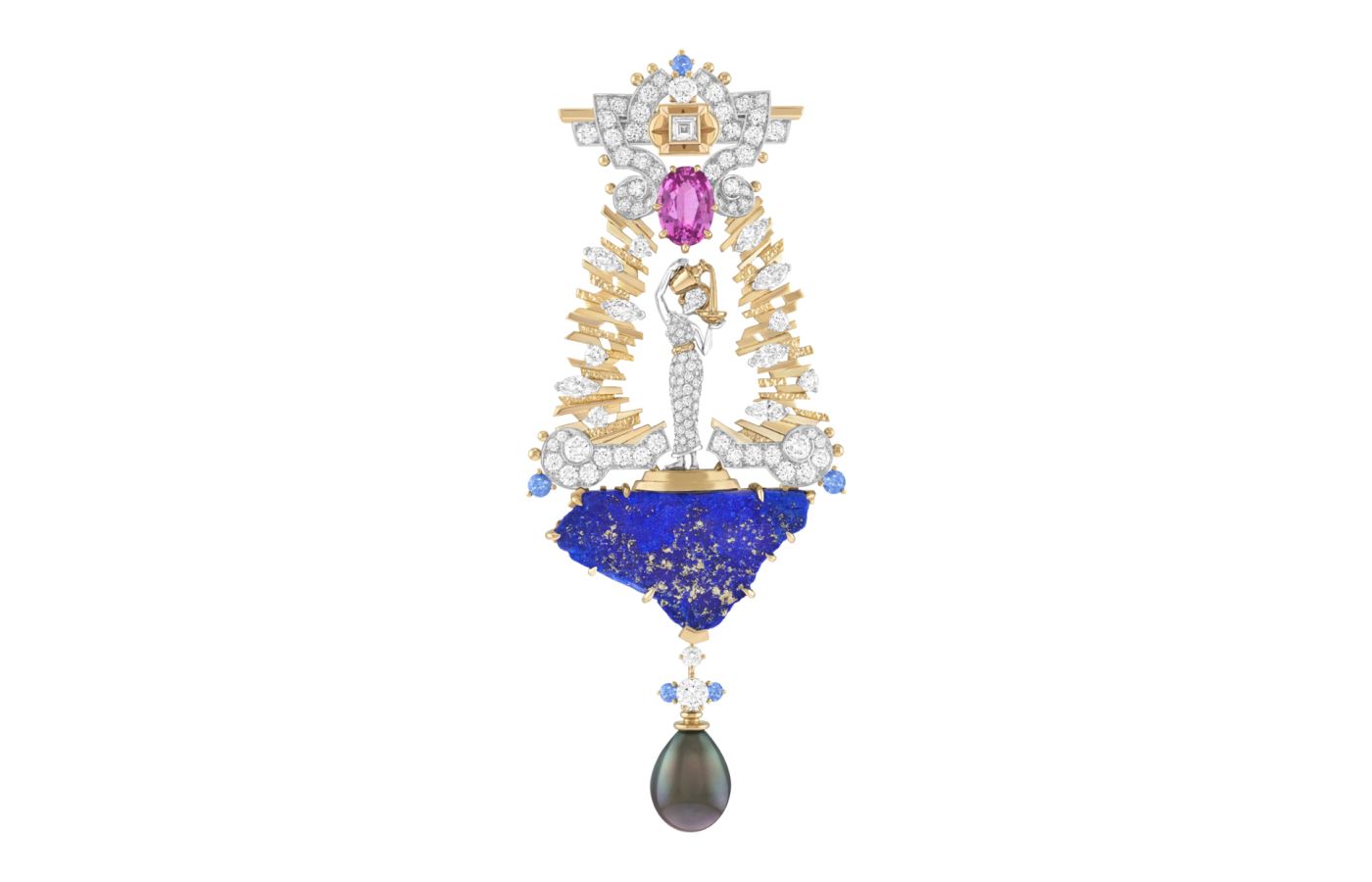
Van Cleef & Arpels Dea Eterna clip in gold, white gold, rose gold, featuring a 3.47-ct oval-cut pink sapphire, blue sapphires, lapis lazuli, gray cultured pearl and diamonds from Le Grand Tour High Jewellery Collection
Chapter II – Paris
The next stop along the Grand Route would be the capital of glamour, Paris. Travellers here would admire the works of art of the ‘Grand Siècle’, particularly those created under the reign of Louis XIV – the Sun King. In this chapter, the Van Cleef & Arpels’ designers honour the city’s penchant for ornate décor like bejewelled chandeliers and over-the-top fashion, using a palette of vivid colours mixed with bold geometric shapes. The Lucendi earrings evoke the beautiful wardrobe and opulence of the Parisian Court’s ladies-in-waiting. Rose gold, diamonds and pink sapphires create elaborate silhouettes that allude to the ornate and extravagant aesthetic of Versailles’ chandeliers. The focal point of each earring is an oval-cut rubellite, one weighing 11.48 and the other 10.14 carats.
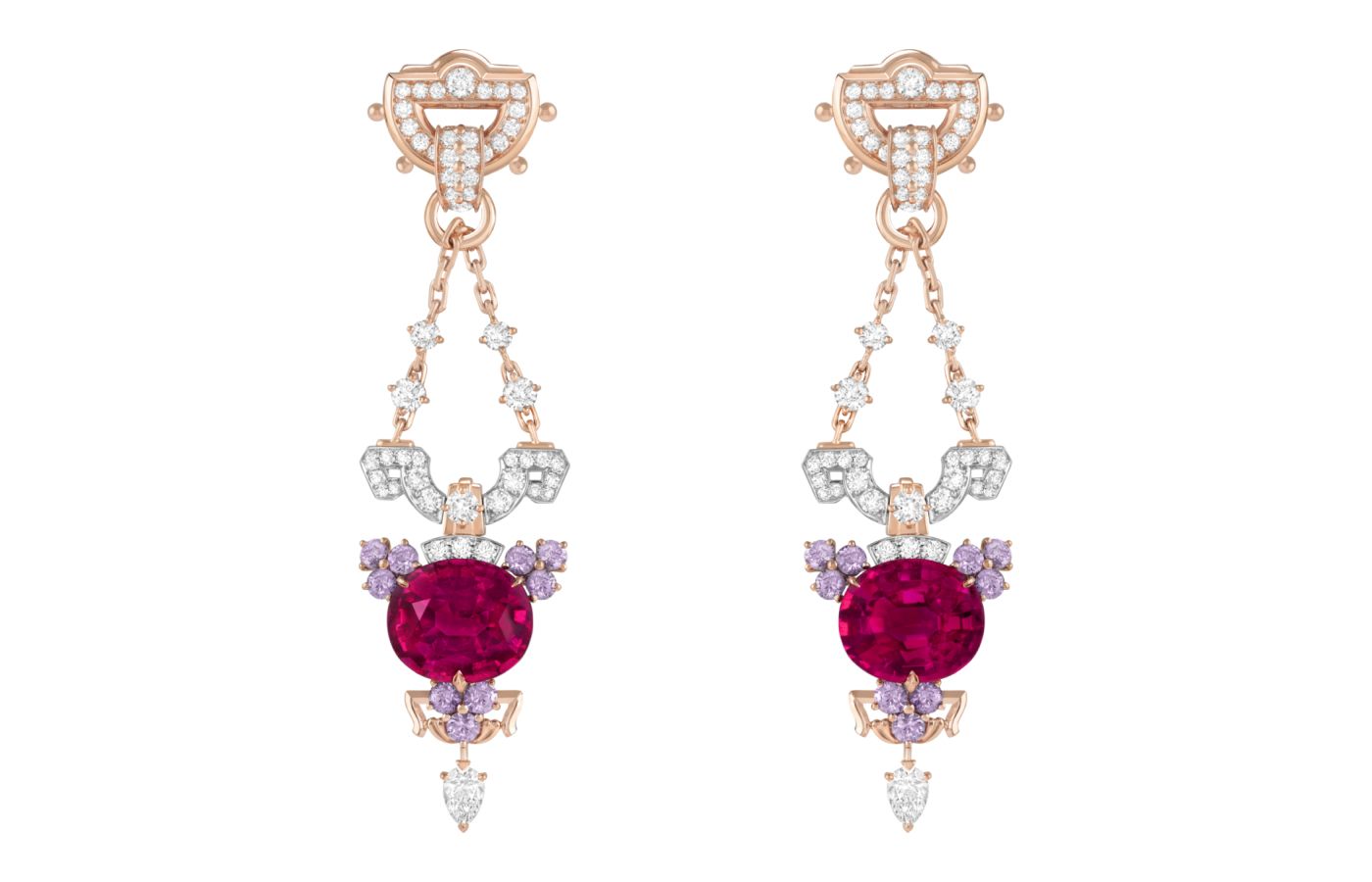
Van Cleef & Arpels Lucendi earrings in rose gold, white gold, two oval-cut rubellites weighing 11.48-cts and 10.14-cts, mauve sapphires and diamonds from Le Grand Tour High Jewellery collection
This celebration of French fashion and taste is further seen in the Noeud Royal ring. This piece is a tribute to the impressive fashion scene born in Paris. A geometric bow of white gold set with baguette-cut and round brilliant diamonds culminates in a cushion-cut pink sapphire of 6.38 carats. The piece also honours the ribbon design motif – a key element in the Maison’s aesthetic since its creation.
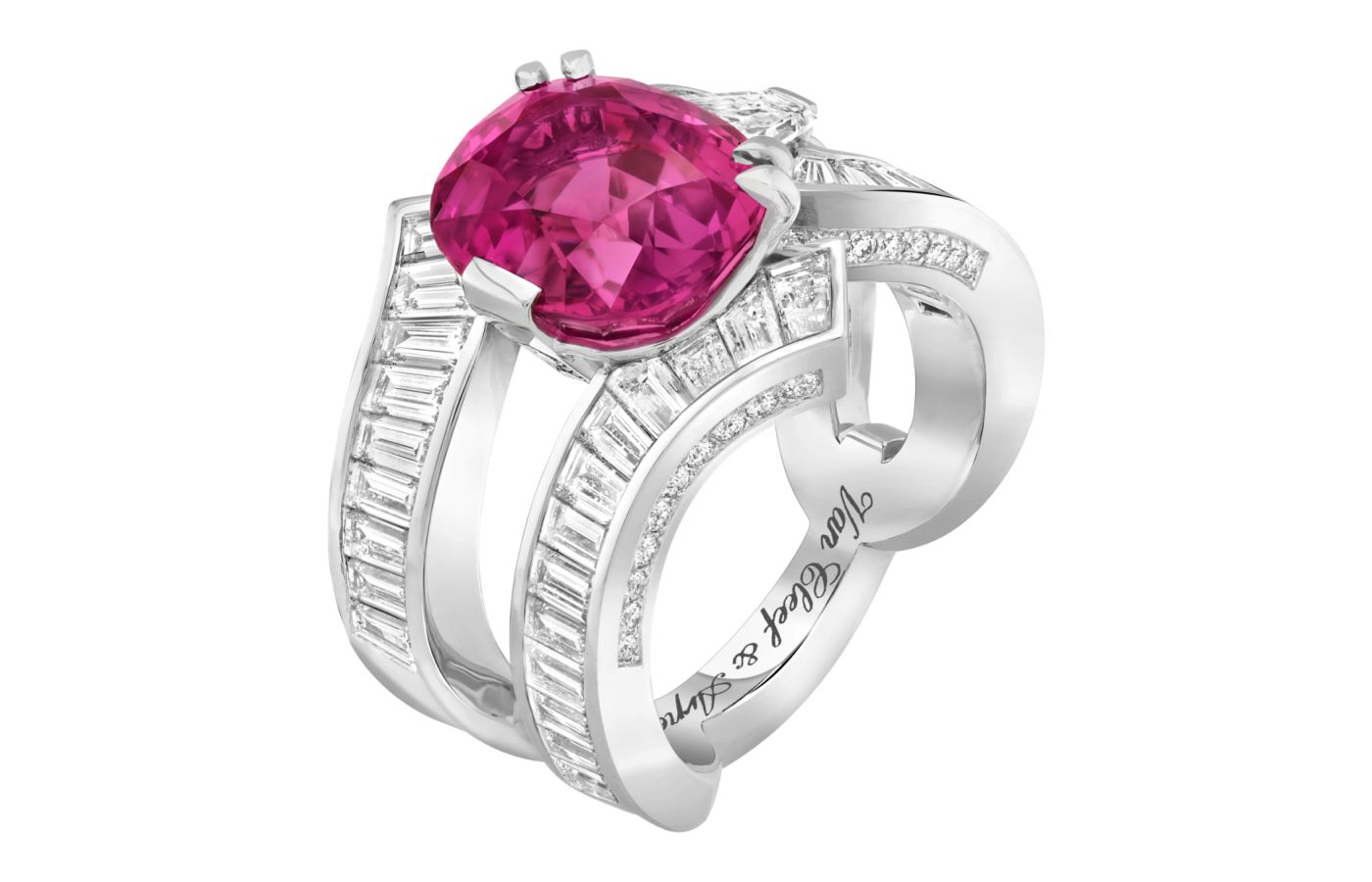
Van Cleef & Arpels Noeud Royal ring in white gold, featuring a 6.38-ct cushion-cut pink sapphire and diamonds from Le Grand Tour High Jewellery collection
Chapter III – The Alps
Moving to a more natural landscape, the pieces in this third chapter celebrate the beautiful and untamed vegetation the Grand Tour pilgrims would have seen as they crossed the Swiss Alps. A drastic change from the fast-paced capital cities of London and Paris, the pieces in this section feature much cooler and softer-toned gemstones. The Regina Montium necklace considers the snow-capped mountains of Switzerland and its lush green forests. A frosted necklace composed of peaks of diamonds, tanzanite, aquamarines and violet sapphires slowly guides you towards an articulated centre piece, where two large cushion-cut tourmalines are nestled in a frame created from these same gems. The smaller 16.26-carat tourmaline sits at the heart of the necklace, whilst the larger 27.70-carat gem is detachable and can be worn as a pendant.
Another work of art inspired by mother nature that is celebrated in this chapter is the Edelweiss, the official flower of Switzerland. This wild plant that only blossoms at high altitudes is recreated as another celebrated Van Cleef & Arpels clip in white and intense yellow diamonds complemented by gentle blue sapphires. Close groups of yellow diamonds are set at the centre of the petals created from pear-shaped, square and marquise-cut white diamonds set in yellow and white gold to simultaneously bring a glacial feel to the design while complementing the colour of the warm yellow diamonds.
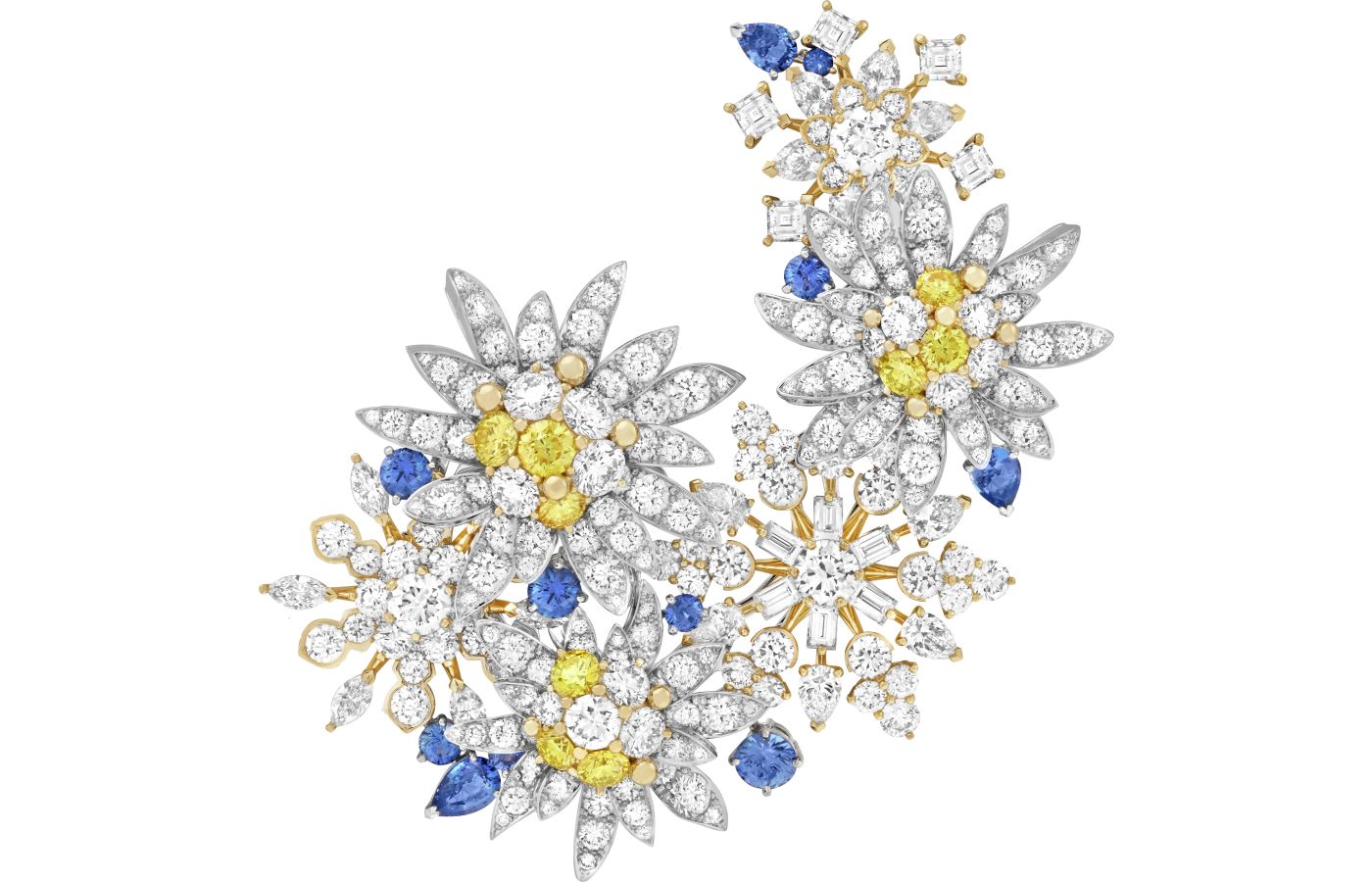
Van Cleef & Arpels Étoile des Glaciers clip in gold, white gold, sapphires, white and yellow diamonds from Le Grand Tour High Jewellery collection
Chapter IV – Venice
We next follow our Grand Tour journeymen across the mountains to the antique and renaissance treasures of Italy, where the first city they would reach is Venice. The pieces in this chapter reflect the waterfront gothic architecture of the city’s bridges, canals and piazzas. The Chant des Gondoliers necklace is a bejewelled model of the city’s canals and archways. Articulated pendeloques of white and yellow gold set with diamonds and deep blue sapphires create an arch motif, indicative of the city’s low bridges. Beneath each carved arch is a cabochon turquoise, of which there are sixteen in total. The seamless bold form of each stone evokes sun-lit blue waters that rush through the city’s canals, whilst the back of the necklace is set with a gradation of sapphires, conjuring the image of the shaded waters beneath each archway. This detailed backing is a telling design detail of Van Cleef & Arpels, where each high jewellery piece is perfectly polished and designed from back to front. The matching drop earrings are fashioned as individual segments of the necklace, each with its cabochon turquoise.
Another important architectural monument in Venice is its best-known square – the Piazza San Marco. This is portrayed by the Reine de l’Adriatique necklace and its matching clip. It is a graphic set of jewels created with intense blue stones, diamonds and rose gold in the image of the Gothic architecture of St Mark’s Basilica. The openwork of the gold and gemstones on the necklace creates an almost mosaic effect that guides the eye to the oval-cut 9.40-carat sapphire at the pendant’s centre. The matching clip depicts the landscape of Venice seen from the sea in the form of a micro mosaic of gems. This piece can be detached and replaced with the brooch, creating two different necklaces and aesthetics.
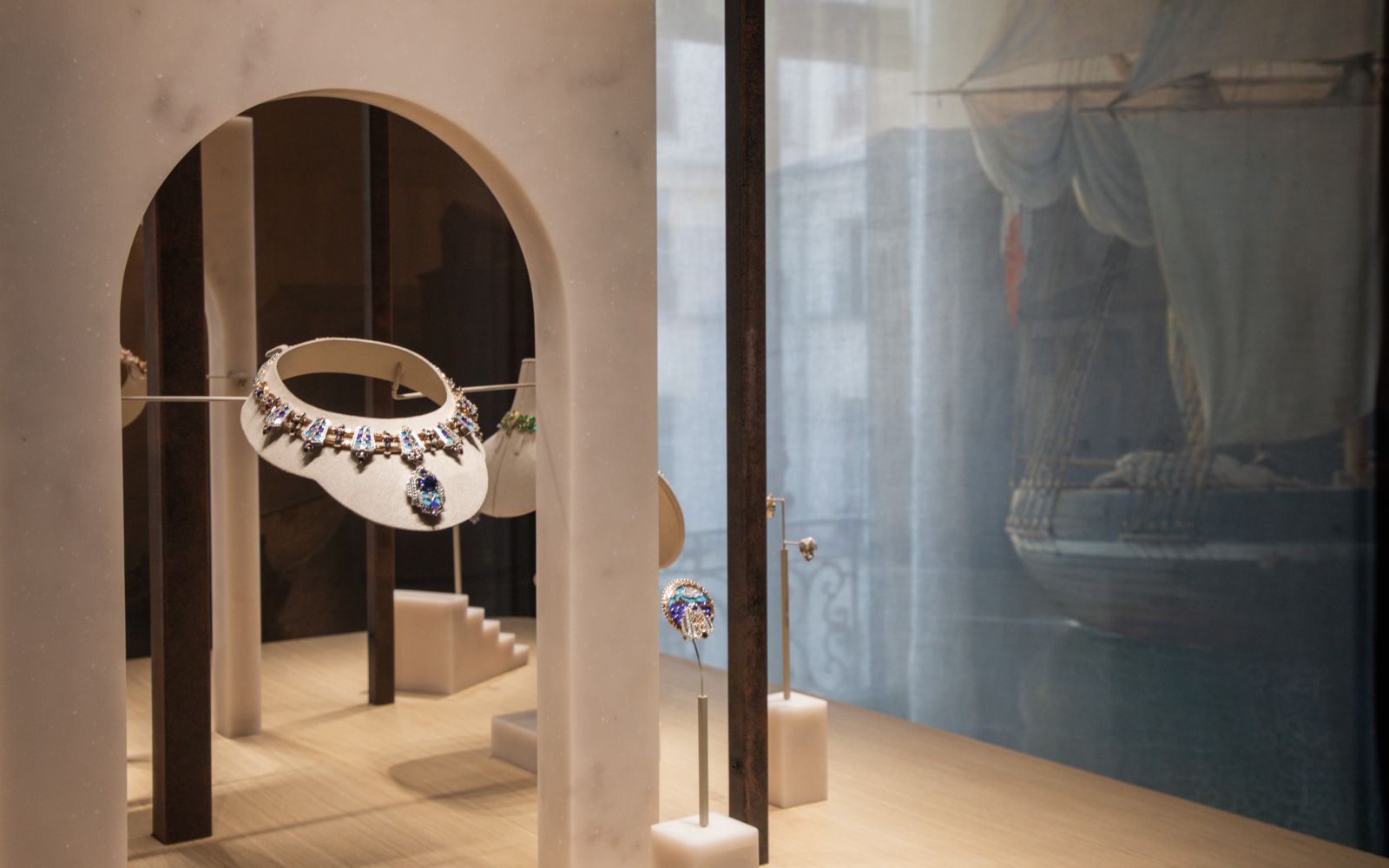
Van Cleef & Arpels Reine de L’Adriatique necklace and clip with interchangeable motifs in white gold, rose gold, a 9.40-ct oval-cut sapphire, sapphires, lapis lazuli, turquoise and diamonds from Le Grand Tour High Jewellery collection
Chapter V – Florence
Moving further into Italy, the pieces in this fifth chapter were created as a tribute to Florence as a place of romance and as the home of the Renaissance movement. They shine a light on the remarkable painters of this artistic period. The Ode à l’Amour ring is instantly recognisable as a high jewellery interpretation of Sandro Botticelli’s masterpiece – The Birth of Venus. Through a blend of creativity and savoir-faire, a carved pink gold shell outlined with a brilliant diamond pave sits atop a white gold band. Inside the shell, Botticelli’s Venus takes the form of a beautiful oval-cut pink sapphire of 4.04 carats, surrounded by smaller pink sapphires, rubies, and diamonds. The curved shape of the shell particularly highlights the savoir-faire of the Maison. To replicate such a realistic shape, the in-house craftsmen employed ramolayé, where the rose gold is carved before being raised in volume. This allows for a shell of striking three-dimensional shape and texture.
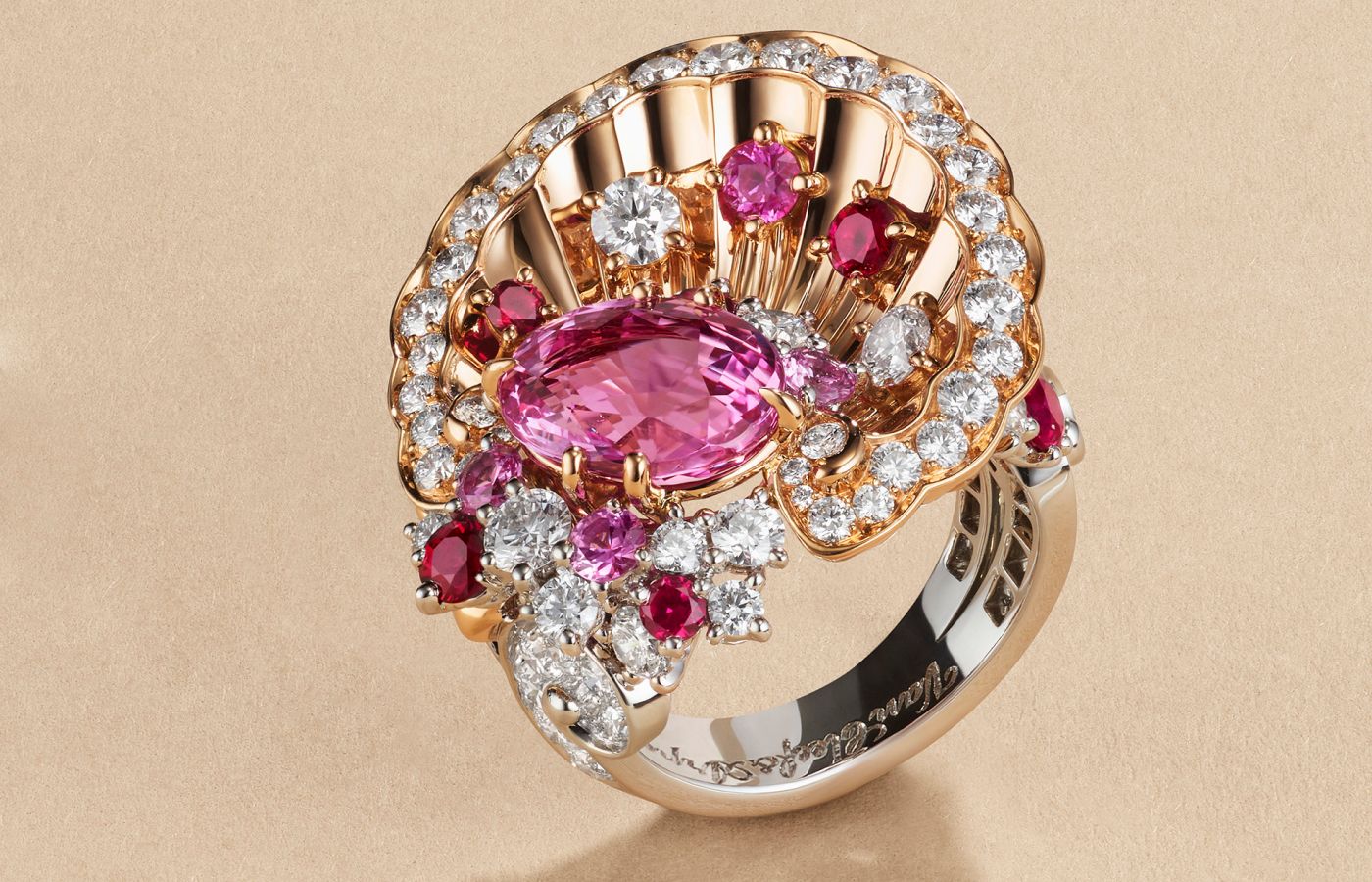
Van Cleef & Arpels Ode à l’Amour ring in rose gold, white gold, a 4.04-ct oval-cut pink sapphire, rubies, pink sapphires and diamonds from Le Grand Tour High Jewellery collection
Another important Florentine painter honoured in this chapter is Angelo di Cosimo, more commonly known as Bronzino. This Florentine artist was famed for his representation of pearls in his works, as most of his female portrait subjects are seen wearing pearl earrings, chokers or decorative headpieces. The Perla di Angelo necklace pays tribute to this jewellery detail in the master’s works by creating a necklace composed of yellow gold, 30.11 carats of emerald-cut emeralds and fourteen white natural pearls.
Chapter VI – Rome
Arriving in Rome, the educational focus of the travellers would be the historical importance of the city and the relics of ancient civilisations that can be found throughout its cityscape. The pieces in this chapter shed light on the antiquity of this important place and its imperial history by featuring gems emblazoned with reminders of the city’s global impact. The city’s great ancient emperors and civilisations are captured in three sculptural clips featuring a glyptic gemstone. This craft was popular during antiquity and involved carving designs and shapes on the surface of gems or completely transforming their shape to depict figures or symbols. The carved gemstones originate from the first to third centuries, each of which is a historical artefact in itself.
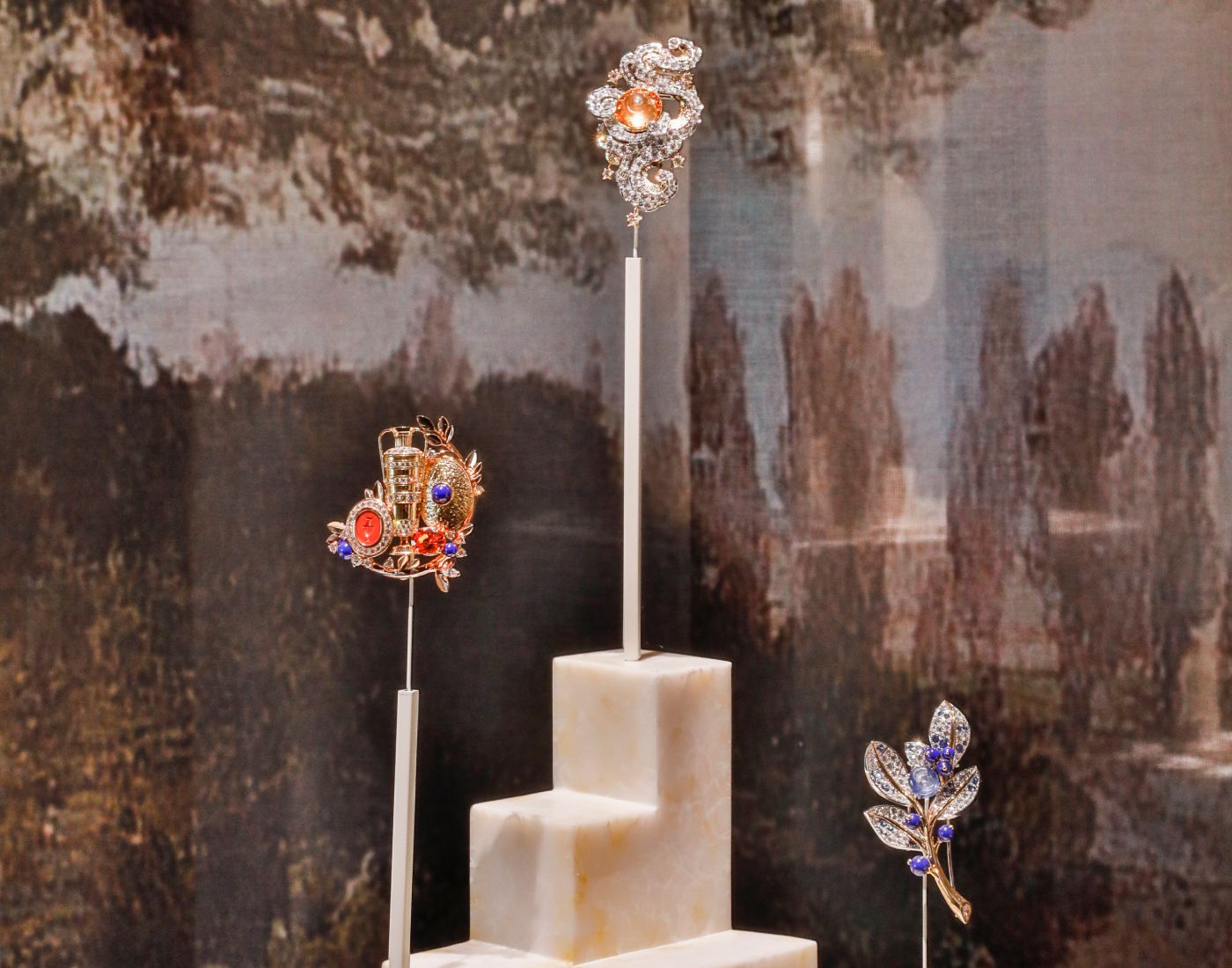
Van Cleef & Arpels Laurier Impérial, Anfora and Fresque Céleste clips from Le Grand Tour High Jewellery collection
The first clip in this series is a sapphire engraved with a bust of the emperor Caracalla, famed for Roman baths. He is depicted in profile, dressed in a traditional robe adorned with fibula. This gem is set in the Laurier Impérial clip, shaped like the laurel wreath crowns that Roman emperors wore.
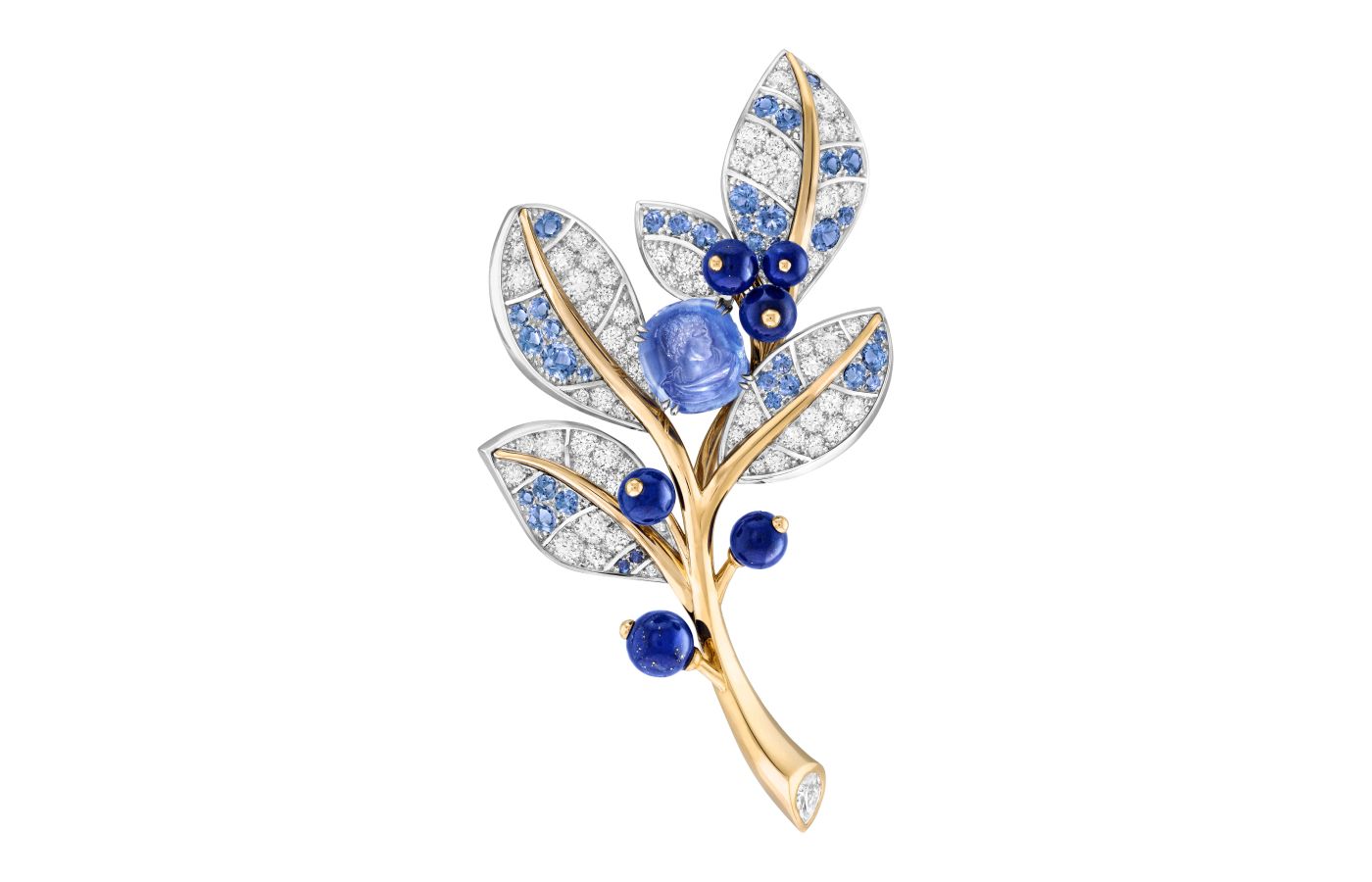
Van Cleep & Arpels Laurier Impérial clip in gold, white gold, a 4.90-ct carved cushion-cut sapphire, sapphires, lapis lazuli and diamonds from Le Grand Tour High Jewellery collection
The second carved stone in this series is a red jasper intaglio that dates to the 2nd century and is engraved with an amphora motif, a traditional ancient Greek two-handed clay vase. The stone is set against a gold and diamond-textured reiteration of the vase, alongside lapis lazuli cabochons and an oval-cut spessartite garnet weighing 4.87 carats.
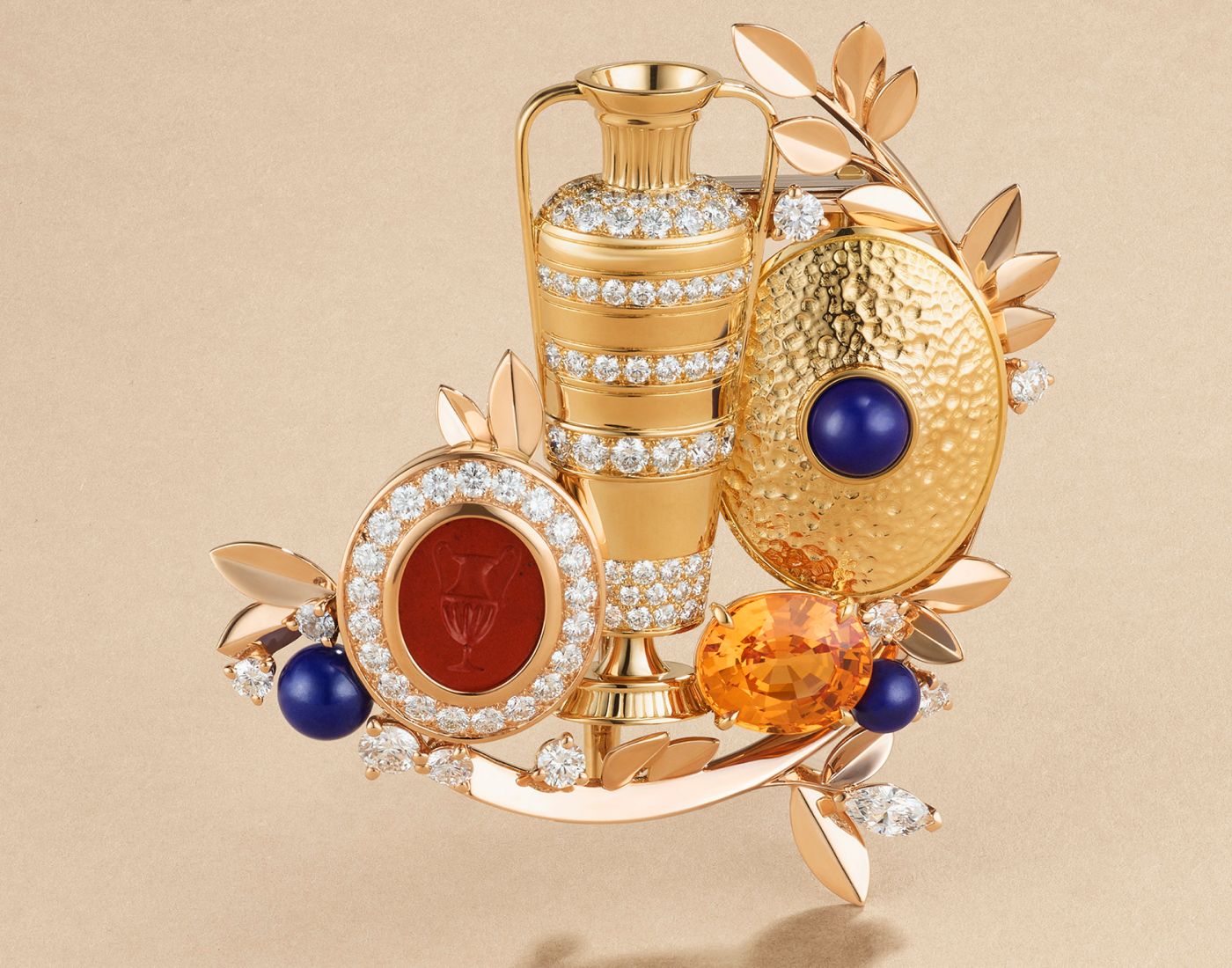
Van Cleef & Arpels Anfora clip in gold, rose gold, a 3.47-ct carved red jasper motif, a 4.87-ct oval-cut spessartite garnet, lapis lazuli and diamonds from Le Grand Tour High Jewellery collection
The final gem in this series of three clips is an 8.62-carat citrine cabochon engraved with a crescent moon and stars. This intaglio was produced between the 1st and 2nd centuries and is set against a backdrop of a carved gold and diamond night sky, further highlighting the magnificent carving of this ancient stone. What is particularly interesting about this final gem is that citrine was rarely used in the history of glyptic art.
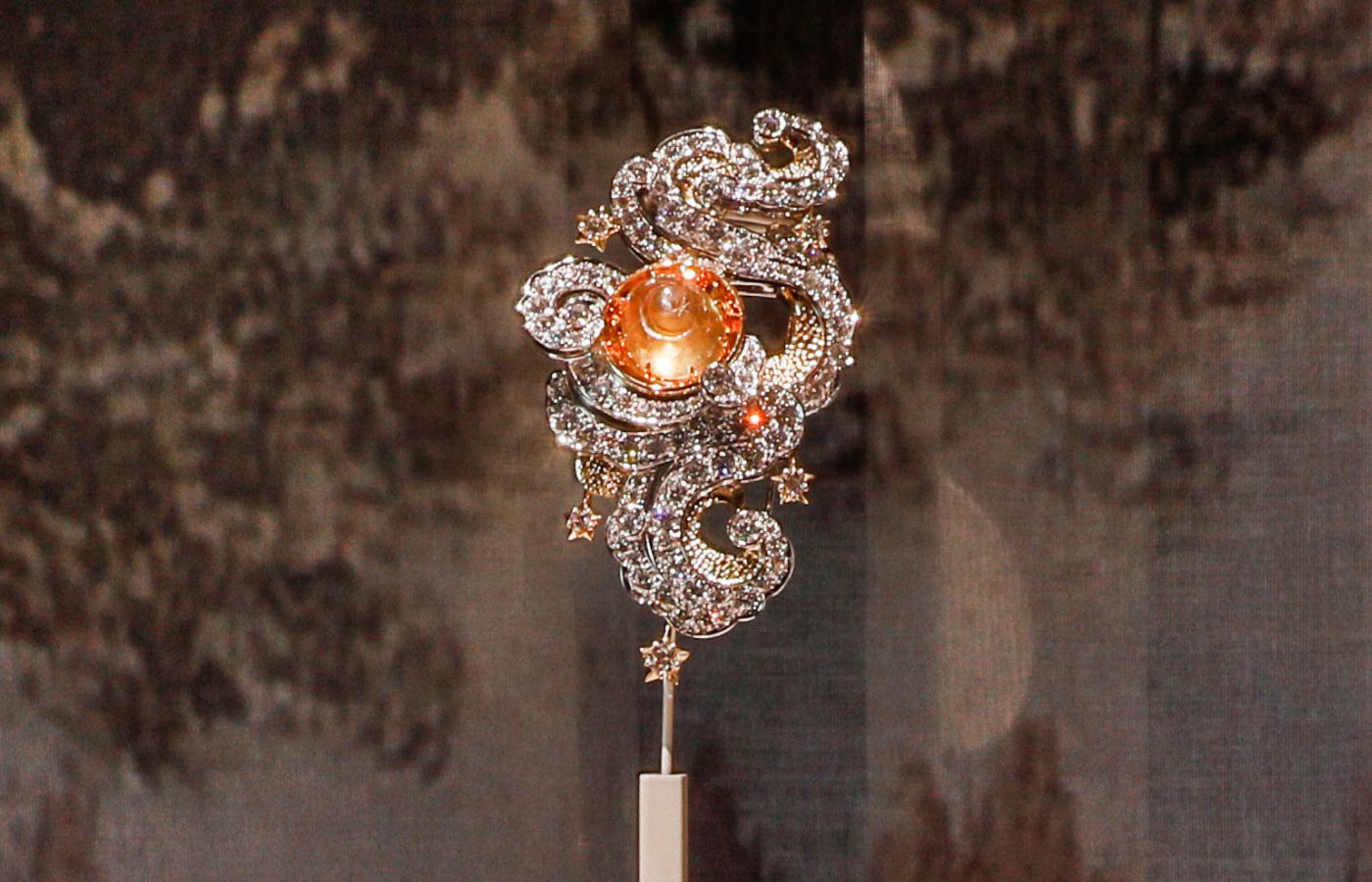
Van Cleef & Arpels Fresque Céleste clip in gold, white gold, a 8.62-ct carved cabochon-cut citrine and diamonds from Le Grand Tour High Jewellery collection
Chapter VII – Naples
After the eternal city, the Grand Tour would move south to Naples, where they would experience a more rugged and exotic landscape of vibrant colours. The Maison chose to honour the tropical flora surrounding the Gulf of Naples. Inspired by the hanging gardens of Ravello and the Amalfi Coast, the Maison presents a set of clips filled with green foliage and colourful flowers. The Symphonie Florale clip recreates the atmosphere of strolling through the vegetation of an Italian villa’s garden. An 8.10-carat spessartite garnet, a 7.01-carat tsavorite garnet and a 7.31-carat pink garnet are set in swirls of white and rose gold mixed with green tsavorites and mauve sapphires. The Symphonie Végétale clip evokes a similar vision. An oval-cut pink tourmaline sits at the centre of a blooming floral shape created from white and rose gold, coloured sapphires and white diamonds. Finally, the Symphonie de l’Eau clip is inspired by the Gulf itself. The reflections of its colourful landscape in the water are brought to light through a 5.88-carat cabochon black opal with intense fires. The gem is set in a leaf-like shape designed in white and rose gold set with sapphires, tsavorite, garnets, green tourmalines and diamonds.
Chapter VIII – Baden-Baden
A final and welcome stop that people would make on the Grand Tour was the spa town of Baden Baden in Germany’s Black Forest region. In this chapter, Van Cleef & Arpels chose to create a piece that would honour the beautiful architecture of this small town. The Jeu de Colombage transformable ring celebrates the historic alleyways, traditional timbered frame houses and ivy-covered walls of Baden Baden’s old town in white gold, rubies, sapphires, diamonds, and an impressive 13.35 sugar load Colombian emerald. This ring can be worn in four different ways, thus varying its style to suit any occasion.
The Grand Tour collection is Van Cleef & Arpels’ most historically inspired collection to date. It allows us to travel in time and between places, with each jewel taking the viewer on an educational journey, with hidden meanings and symbols in every design.

WORDS
Livia Primo Lack , a Watches and Jewelry journalist and content creator, has covered all aspects of luxury jewels and timepieces. With a strong background in the editorial world, she has developed a keen eye for emerging designers as well as for groundbreaking innovations from iconic brands
